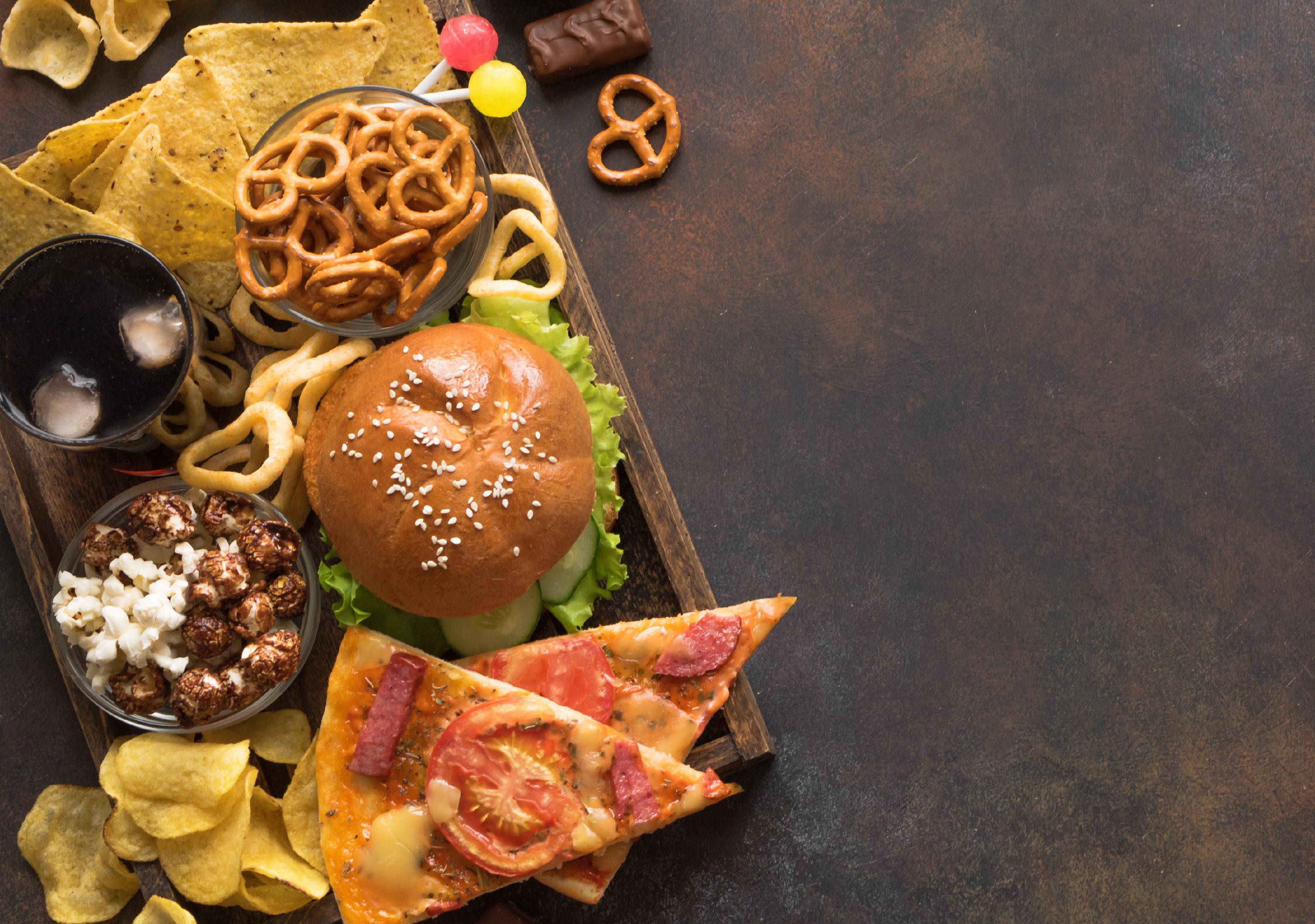






There need to be at least 2.7 children per woman to reliably avoid long-term extinction, according to study
Billionaire and Tesla CEO Elon
Musk has made headlines with dire warnings that declining birth rates are an “existential crisis” for humanity.
The threat might be even more dire than Musk (the father of at least 14) says, a new study argues.
The number of new births needed to maintain human population levels is higher than previously thought, researchers report.
There need to be at least 2.7 children per woman to reliably avoid long-term extinction, according to findings published April 30 in the journal PLOS One.
That’s higher than previous estimates, which held that a fertility rate of 2.1 children per woman would maintain population levels, researchers say.

However, that figure didn’t account for random differences in how many children people have, as well as changes in death rates, sex ratios and the possibility that some adults never have children, researchers said.
“A fertility rate higher than the standard replacement level is necessary to ensure sustainability of our population,” lead researcher Diane Carmeliza Cuaresma, an assistant professor at the University of the Philippines Los Baños, said in a news release.
All G7 countries have fertility rates well below either level, researchers noted — Italy at 1.29, Japan at 1.30, Canada at 1.47, Germany at 1.53, the U.K. 1.57, the U.S. at 1.66 and France at 1.79.
South Korea has the lowest fertility rate, at 0.87, and Japan’s popu-
lation is projected to decline by 31% in every generation if the fertility rate stays below the replacement level, researchers added.
For the new study, researchers calculated population levels accounting for factors like the ratio of females giving birth, the number of women who don’t have children and death rates prior to reproduction.
Results also showed that if more girls are born than boys, that reduces the extinction risk among humans.
That finding jibes with a long-observed evolutionary phenomenon, that more girls than boys tend to be born under severe conditions like war, famine or plague.
Most developed countries don’t need to be immediately concerned about population levels, the study explained.
“Extinction is not an immediate issue owing to the large population size in these countries,” researchers wrote.
However, the results suggest that most family lines will vanish due to a lack of offspring.
“The present results have a profound implication from an individual perspective: The family lineages of almost all individuals are destined to go extinct, whereas very few exceptions may survive for many generations,” researchers wrote.
“Languages also face the risk of extinction, with at least 40% of more than 6,700 spoken languages in the world threatened to disappear within the next 100 years,” researchers added. “The extinction of a language results in the disappearance of a culture, art, music and oral traditions.”



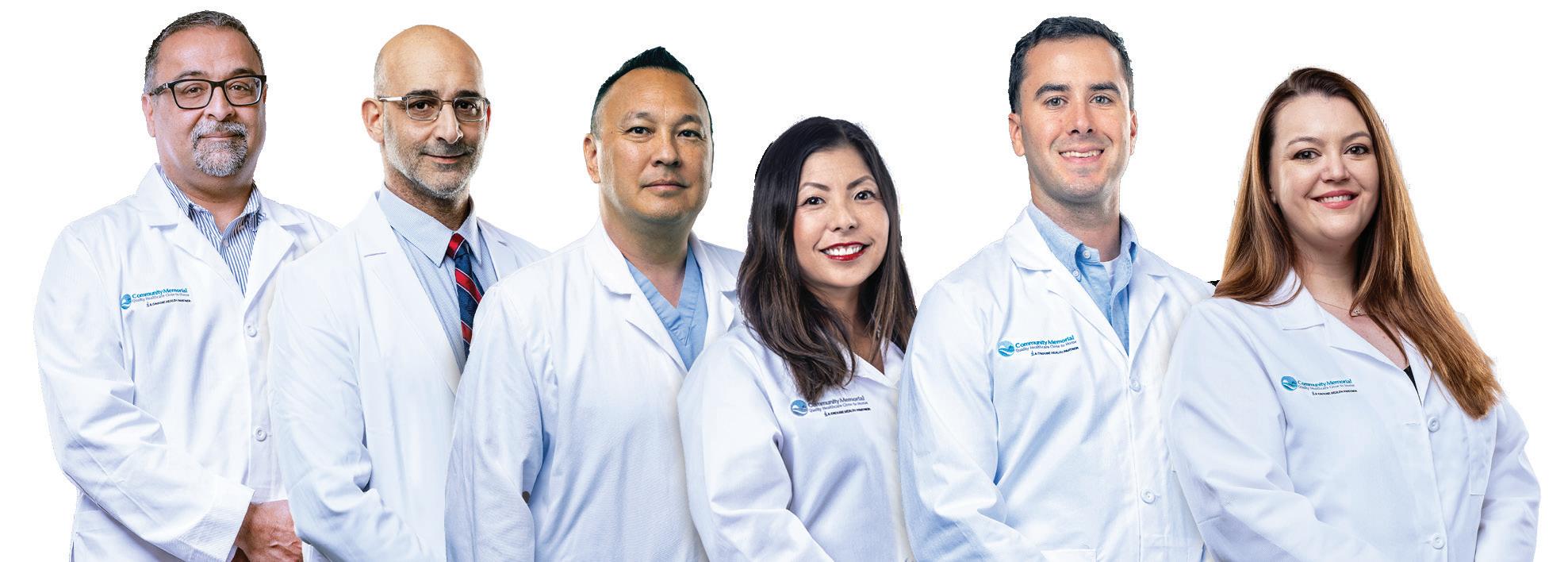
And, if you suspect you have a broken bone, don’t wait. Our
Next time you see your family physician or a hospital doctor, be extra kind and patient — they could be on the verge of burning out, a new study warns.
About 10% of internal medicine doctors in the U.S. report a high level of burnout, researchers reported May 5 in the Annals of Internal Medicine.
Further, doctors in the West are at significantly higher risk for burnout compared to those in other U.S. regions, researchers found.
“Understanding burnout in this population that provides general medical care is particularly relevant given the projected shortage of approximately 40,000 primary care physicians within the next decade,” concluded the research team led by physician Nathan Houchens, a clinical associate professor of internal medicine at the University of Michigan Medical School.
For the new study, researchers surveyed 629 internal medicine docs found through a national database maintained by the American Medical Association. About half of the doctors provide primary care, and the other half work in hospitals.
Researchers found that around 10% of the doctors had the three signs of burnout — emotional exhaustion, a sense of detachment and a feeling that their efforts don’t make a difference.
Burnout risk was similar among doctors working at community medical centers, veterans affairs facilities and academic hospitals, results show. Similarly, there were no significant differences in burnout risk between primary care or hospital doctors, or between doctors working in inpatient or outpatient settings, researchers found.
However, about 15% of doctors in the West suffered from burnout, significantly higher than those in the Northeast (9%), Midwest (9%) or South (7%), researchers found.
“Burnout remains prevalent among internal medicine physicians and does not seem to correlate to specific practice contexts,” researchers concluded. “Future research should explore systemic interventions that target common, important burnout drivers for internal medicine physicians.”
A monthly newspaper published by Local News, Inc. 20,000 copies distributed. To request home delivery ($21 per year), call 315-749-7070.
In Good Health is published 12 times a year by Local News, Inc. © 2025 by Local News, Inc. All rights reserved. 4 Riverside Drive, # 251, Utica, NY 13502 Phone: 315-749-7070 • Email: IGHmohawkvalley@gmail.com
Editor & Publisher: Wagner Dotto • Associate Editor: Stefan Yablonski
Contributing Writers: Barbara Pierce, Deb Dittner, Gwenn Voelckers, David Podos, Deborah Jeanne Sergeant, Anne Palumbo
Advertising: Amy Gagliano: 315-402-3370 • Email: amyIGHmv@gmail.com
Layout & Design: Angel Campos-Toro • Office Manager: Mary Trepasso-Ayers
your healthcare provider.


By George W. Chapman
Advantage plan offered by commercial insurers. It is often the only Advantage plan in a market. Unlike traditional Medicare, you are limited to providers within your chosen Advantage plan. When the local hospital system can’t reach an agreement with an Advantage plan, (surprise, usually over reimbursement) you can be left holding the proverbial bag and must scramble to find another Advantage plan accepted by your physician–hospital or give up Advantage plans altogether and revert back to traditional Medicare with which virtually all docs and hospitals participate. Medicare Advantage plans have been paying out more in claims as their senior members age. If they can’t be paid more by CMS they resort to negotiating lower payments to providers. If no agreement is reached, the Advantage plan will exit the market.
This confusion is just another reason to seriously consider universal health.
The American Association of Medical Colleges predicts that, unless things change, the shortage of primary care docs will increase to 45,000 by 2034. A survey produced by MDLinx and administered by M3 Global research of practicing physicians revealed 42% are very concerned about the impact of the shortage on quality, 84% have already seen the quality of care compromised and 34% would not recommend pursuing a career in medicine. Ironically, medical school applications are at an all-time high.
One of the problems is there are not enough residency programs for all the medical school graduates. Medicare determines the number of residency slots per hospital and funds them. Another problem is most medical school grads are faced with tuition debt around $250,000. So the
Once practically eradicated, there have been measles outbreaks in six states (as of early May). Vaccine hesi tancy and fatigue from the COVID-19 pandemic coupled with misinformation and even disinformation have contributed to the outbreaks. Scientific studies show that even a slight uptick in MMR vaccine use can prevent millions of new infections. JAMA recommends the first dose at 12-15 months followed by a second at 4-6 years. If the current rate of vaccination was kept constant, measles could become an epidemic with 850,000 cases over 25 years. If the current rate of vaccination decreased by just 10%, the prediction model estimates 11 million cases of measles over the next 25 years. The expense, let alone the potential deaths, would be cataclysmic. Now, if there was just a 5% increase in the current MMR vaccination rate, the prediction model estimates there would be less than 6,000 cases over 25 years. That is what is called a “tipping point.” If 95% of kids are vaccinated, we reach herd immunity. If parents refuse to vaccinate their kids,
more lucrative specialties are more appealing than primary care specialties like family practice, pediatrics, internal medicine and OB-GYN. Most primary care docs work 50-60 hour weeks. Finally, third party reimbursements have not kept up with inflation so running a financially viable primary care practice is a challenge, to say the least. Without a comprehensive national system to address and correct the impediments to pursuing primary care, it is very likely the 45,000 shortage will happen. Some ideas to make primary care more attractive are: increase and fund the number of residency slots at hospitals but only for primary care; forgive medical school debt for all primary care docs (there is such a program but the physician must work three years in a federally designated manpower shortage area);
could insurance companies deny the expenses associated with treating the disease? Could insurance companies increase the premiums?

The DOJ has filed a complaint against Aetna, Elevance and Humana for allegedly paying insurance brokers or advisers millions to steer relatively healthy prospects to their plans and to steer relatively unhealthy patients to the competition. The needs of the individual patient be damned. So far, there has been no determination of liability. The services of an insurance broker or adviser are free. They are eventually paid by the insurance company selected by the client. These brokers have an ethical and fiduciary responsibility to recommend the coverage that best suits the client’s individual situation.
Former National Institutes of Health director Frank Collins, M.D, Ph.D. (note M.D. and Ph.D.) regrets when you mix politics and science, you get just politics. He observed this became baked in during the politically polarizing COVID-19 epidemic when conspiracy theories and med-
incorporate “lifestyle” medicine into the primary care purview and reimbursement which includes nutrition, diet, exercise, sleep and stress management for chronic diseases. Finally, every year more and more physicians, in all specialties, seek employment with one of the hundreds of hospital-based healthcare systems. The business headaches of medicine are killing private practice. An effective and accessible primary care base is absolutely essential to the clinical and financial success of a large healthcare system. Absent a national fix, it may be up to savvy healthcare systems to provide more lucrative compensation packages and better working conditions for primary care physicians if we are to at least mitigate the predicted shortage.
ical quackery took hold, but probably showed early signs during the Obama administration. Before that, Collins contends, both parties were in sync and relationships between NIH-CDC-CMS-FDA and Congress were cordial and professional. You could not tell what anyone’s party affiliation was as all were interested in defeating Alzheimer’s, cancer and various diseases impacting the nation’s wellbeing.
Research was considered to be not only necessary but vital. It must have been nice back in the day to let scientists do their thing. Hundreds of researchers have been fired by the current secretary of Health.
So what do you do when your phy sician or hospital no longer accepts your insurance? You are often taken by surprise with little notice. Now you have to find a new provider or switch insurance. This dilemma is happening with increasing frequency especially with Medicare Advantage plans. Fifty-four percent of 62 million Medicare eligibles are enrolled in an

You can thank the CFPB (Consum er Fraud Protection Bureau) for keeping medical debt from be ing considered by lenders when it comes to loans or credit cards. But with the fate of the CFPB is now in limbo, consumer advocates fear the rule could be rescinded. The bureau has kept about $49 billion in medical bills from the credit reports of some 15 million people. Despite political pressure to kill the rule, advocates remain cautiously optimistic because the rule has bipartisan support due to the pervasiveness of medical debt (which would not exist with national universal coverage).
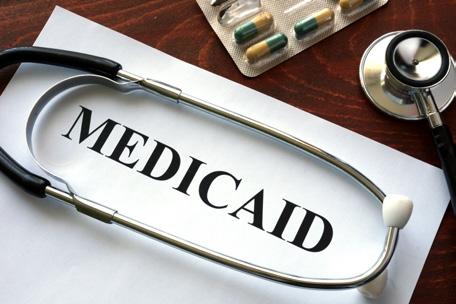
As of this writing in early May, there is growing support in Congress not to slash Medicaid by $880 billion over the next 10 years. It would deny coverage for millions and place hospitals in financial jeopardy. But what is most infuriating is the belief that the Medicaid budget should be cut because of supposedly rampant waste, fraud and abuse. So throw the baby out with the wash? Fraud, waste and abuse are already sought, litigated and recovered by the HHS Office of Inspector General. There is an effective police force, so punishing medical providers and legitimate Medicaid recipients to reduce fraud is absurd. The OIG recovered more than $7 billion in 2024. It brought 1,548 criminal and civil enforcement actions including overpayments to providers, enrollees and outright criminals. So no need to slash the Medicaid budget. Increase the budget of the HHS OIG.

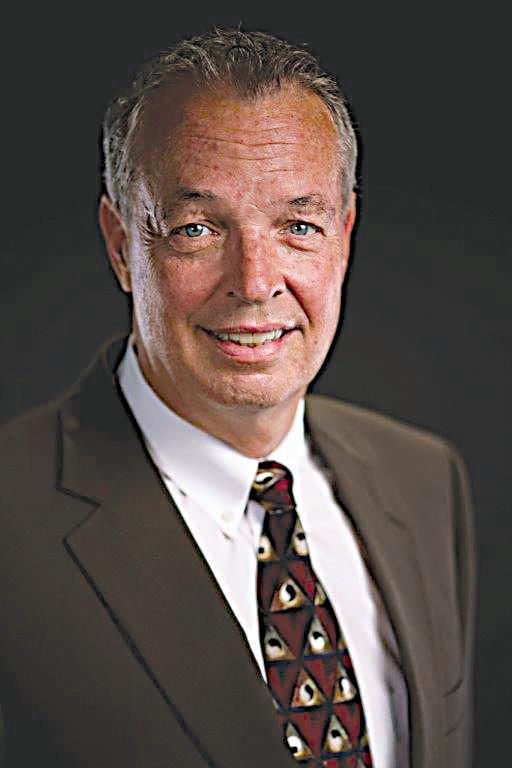
George W. Chapman, a former healthcare executive, worked as a healthcare business consultant for several decades. He owned and operated GW Consulting, based in Syracuse. He retired at the end of 2024, after 45 years in the business.


Drug overdose deaths decreased by 26.9 percent from 2023 to 2024, according to provisional data released in May from the National Center for Health Statistics.
According to the new data, drug overdose deaths in the United States decreased from an estimated 110,037 in 2023 to 80,391 in 2024.
Overdose deaths involving opioids decreased from an estimated 83,140 in 2023 to 54,743 in 2024. Overdose deaths involving cocaine and psychostimulants (like methamphet-
amine) decreased, too (from 30,833 to 22,174 and from 37,096 to 29,456 deaths, respectively). There was a sizable decrease seen in overdose deaths from fentanyl, from 76,282 deaths in 2023 to 48,422 deaths in 2024.
Almost all states saw decreases. Louisiana, Michigan, New Hampshire, Ohio, Virginia, West Virginia, and Wisconsin and Washington, D.C., experienced declines of at least 35 percent. Meanwhile, South Dakota and Nevada saw slight increases in 2024 compared with 2023.
These provisional numbers are
featured in an interactive web data visualization. The 2024 data are subject to change as more data are submitted to the National Vital Statistics System.
Experts say there are several possible factors driving the decline in overdose deaths, the Associated Press reported. The most likely reasons for the decrease include greater availability of naloxone, improved access to addiction treatment, changes in how people use drugs and the growing positive impact of opioid lawsuit settlement money.
“Despite these overall improvements, overdose remains the leading cause of death for Americans aged 18 to 44, underscoring the need for ongoing efforts to maintain this progress,” the U.S. Centers for Disease Control and Prevention said in a statement. “Through sustained funding to support prevention and surveillance activities like the Overdose Data to Action program, we will continue moving toward a future in which Americans no longer lose their lives to drug overdoses.”


By Gwenn Voelckers
Iremember the first time I hosted a gathering on my own after my divorce. It was a holiday party, and — no surprise — most of my guests were married. I worried I would feel like the proverbial third wheel at my own event.
On top of that, I was afraid my house would be too crowded, my seating too sparce, and the idea of entertaining without someone at my side felt … well, overwhelming.
Who would replenish drinks and the cheese board while I greeted people at the door? What if I ran out of ice or the music stopped or someone spilled wine on the rug?
For too long, I avoided hosting altogether, telling myself I wasn’t the entertaining type. But deep down, I missed bringing friends together in my home like “old times.”
I missed my former life.
Like so many things we learn when adjusting to life alone, solo hosting takes a little courage, a little planning and a willingness to stretch. But the good news is, it gets easier. Actually, it gets to be pretty fun.
Take my friend Sarah. She had been divorced for about a year when she decided to throw her first party alone. Her best friend was turning 60, and instead of meeting at a restaurant, Sarah wanted to do something more personal. “Nothing big,” she said. “Just a few friends, maybe some cake.”
Well, it turned into much more than that.
At first, Sarah was nervous. She worried her condo wasn’t big enough or stylish enough. She was anxious about the food, the music and the fact that she didn’t have a partner to help introduce old friends to new friends.
But once she got going — selecting a fun “Oldies but Goodies” theme, making a playlist, even serving fondue à la 1960s — her energy shifted. And when the sun set? Her patio glowed with string lights while guests let loose to “September” by Earth, Wind, and Fire, including her sister who hadn’t danced in decades.
Sarah was radiant. “I forgot how much I love entertaining,” she told me.
So, if you’re thinking about gathering friends together this summer, I say go for it.
Start small. A potluck picnic is a perfect, low-pressure way to ease into solo hosting. And who doesn’t love a backyard get-together in warm weather with easy food and good company?
Here are 10 tips to help make your solo-hosting picnic smooth, relaxed, and enjoyable:
1. Enlist a Co-Host — Just because you’re hosting solo doesn’t mean you have to do everything alone. Invite a friend to be your co-host. He or she can help greet guests, find serving
utensils and provide moral support if you start to worry whether you made enough guacamole.
2. Choose a Simple Theme — Themes add structure and fun without being fussy. Think “Summer Fiesta,” “Backyard BBQ,” or “Garden Party.” A theme gives guests a jumping-off point when planning what to wear or bring and helps you narrow down decorations and music choices.
3. Create a Guest List and Online Invite — Evite or even a group email will do the trick. Keep it casual, upbeat and clear. Let people know it’s a potluck picnic, the start time, and whether kids are welcome. Be sure to include your theme (if you have one) and any special notes, like “BYO lawn chair.”
4. Coordinate the Potluck — A little planning goes a long way. In your invitation, assign a category (salad, main, side, dessert, drink) and ask guests to reply with what they’re bringing. You can then easily manage any duplications by email. Simple.
5. Set the Scene Without Stressing — You don’t need to turn your backyard into a magazine spread. A few folding tables, some string lights or battery-powered candles, and fresh flowers from Trader Joe’s can transform your space. Launch your playlist, toss a few blankets on the lawn, and call it a day.
6. Keep the Menu Self-Serve — Buffet-style is the way to go. Set up stations: one for food, one for drinks. Stock a cooler with water and nonalcoholic options. Keeps things casual and let guests help themselves.
7. Include Something to Do (Besides Eating) — A game or two can help break the ice and give people a reason to move around. Think lawn games like cornhole or bocce ball. Last summer, I set up a badminton net and went old-school with croquet. Have fun!
8. Be Present, Not Perfect — No one cares if the napkins match or if you forgot to light the citronella candle. Your guests are there to enjoy your company, not critique your tablecloth. Relax and enjoy the moment. A dropped drink or a late arrival keeps things interesting.
9. Leave the Cleanup for Tomorrow — Consider leaving the big cleanup until the next day. Do the basics (like getting food inside and covering anything perishable), then pour yourself a drink and bask in the glow of what you just pulled off.
10. Do It Again — Seriously. Once you realize how doable and fun it is, you’ll want to throw another party. Hosting solo doesn’t have to feel lonely or hard. It can feel liberating, empowering — even thrilling.
So, if you’re on the fence about your first solo hosting experience, wondering whether it’s worth it ... trust me, it is. Not just because you’ll have fun, but because you’ll remind yourself that your life, your home, and your friends are worth celebrating.
Start small. Keep it light. Feel the joy.
This summer, let yourself be the host who says, “I can do this.” Because you can!
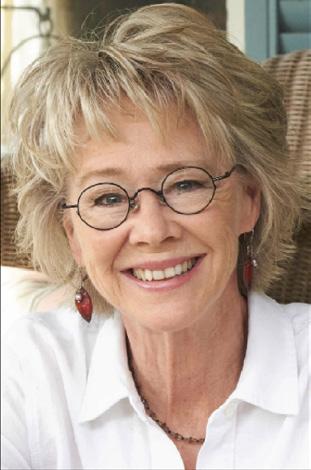
Gwenn Voelckers is a certified life coach (CLC), columnist, and author of “Alone and Content,” a collection of inspiring essays for those who live alone. She welcomes your comments, questions, and inquiries at gvoelckers@rochester.rr.com.
Previously, the CDC estimated 1 in 150 kids had autism. That rose to 1 in 44 by 2018, 1 in 36 in 2020, and now 1 in 31
Autism diagnoses are on the rise again, with about 1 in 31 U.S. children affected, according to a new report from the U.S. Centers for Disease Control and Prevention (CDC).
The latest data, from 2022, shows a jump from the 2020 estimate of 1 in 36.
The report looked at health and school records for 8-year-olds in 14 states and Puerto Rico, the Associated Press said.
Rates were higher among boys, and also among children who are Asian/Pacific Islander, Black or
American Indian/Alaska Native, the CDC added.
Autism is a developmental condition linked to differences in the brain. Symptoms vary, but may include delays in learning and speech, trouble with social interactions and a strong need for a routine.
Until the 1990s, autism was considered rare. Back then, only children with severe symptoms were typically diagnosed. But it came to include a range of other mild conditions, known as autism spectrum disorder (ASD), The Associated Press said.
Previously, the CDC estimated 1

in 150 kids had autism. That rose to 1 in 44 by 2018, 1 in 36 in 2020, and now 1 in 31.
Experts say the increase is due to better awareness and improved screening. There’s no blood or lab test for autism; doctors make the diagnosis by observing behavior.
Over the years, research has ruled out childhood vaccines as a cause. Other studies have explored genetics, as well as age of parents, maternal health and exposure to certain chemicals. Some researchers suspect a combination of factors could play a role.
Still, some people still continue to question the science. U.S. Health Secretary Robert F. Kennedy Jr. recently announced plans for a major autism research effort.
He said it would involve hundreds of scientists worldwide and find the cause of autism by September.
Kennedy also claimed the program would help remove those causes. During a recent meeting at the White House, Kennedy and President Donald Trump both referenced the new 1-in-31 stat, The Associated Press said.
Kennedy’s announcement drew much criticism for his decision to hire physician David Geier to lead the research.
Like Kennedy, Geier has long pushed the idea that vaccines cause autism. In 2011, Maryland officials found that Geier practiced medicine without a license.

RCIL ‘s chief executive officer: ‘We adhere to the philosophy that people with disabilities do not have to be changed; they do not have to be “fixed”
By David L. Podos
Q: How long have you been the CEO of RCIL — Resource Center for Independent Living?
A: I have been the CEO for the past 11 years.
Q: What is your professional and educational background? Are you from this area?
A: I am not from the area. The majority of my professional life was in Florida where I worked for a large institution for intellectually disabled individuals. From there I went to Iowa where I was a superintendent for another large institution before moving up to Central New York and becoming the CEO for RCIL.
Q: What is your educational background?
A: I am a social worker by profession and have a master’s degree in social work.
ity of being human. Each of us is unique and therefore each one of us has different wants and needs and we all deserve the life we want to live. So, when we think we have to fix somebody, we want them to live a standard that we set for them. We believe that people set a standard for themselves.
Q: What are the main services that you offer?
A: First off we are a civil rights organization. So, what we say is that a person who has a disability should have the same civil rights as anybody else. So, to that end, people may need assistance to live in the community and we provide that assistance. For example, we provide assistance in gaining employment, we provide peer counseling. We also are a fiscal intermediary. So, let’s say a person needs someone to assist them in the home. We help them with the process of hiring who they want. We do all the paperwork, which oftentimes can be complex and hard to understand. We can assist them in paying bills etc. Most of our programs are empowering people to decide who comes into their home, when they come into your home and how they assist you.
Q: Do you offer services to veterans?
A: Yes, we do. It is called Veterans Directed Care and they receive the same services that we offer to our non-veteran clientele. And another big program that we have is our social adult day program called Many Hearts. People come to our facility for the day. They have breakfast, hang out, talk amongst one another, read the paper and so forth.
Q: That sounds really nice, especially for people who might be isolated, perhaps a bit depressed, lonely etc. Do you offer this service every day or just certain days during the work week?
A: We offer this service Monday through Friday and if someone does not have the transportation to come here, we will pick them up.
Q: How many employees does RCIL have?
A: Just under 2,000.
Q: Does RCIL just offer services here locally in Oneida County?
A: No, we actually provide services to a large part of New York state, as well as the NYC area and out to Long Island.
Q: Where does your funding come from to operate your programs?
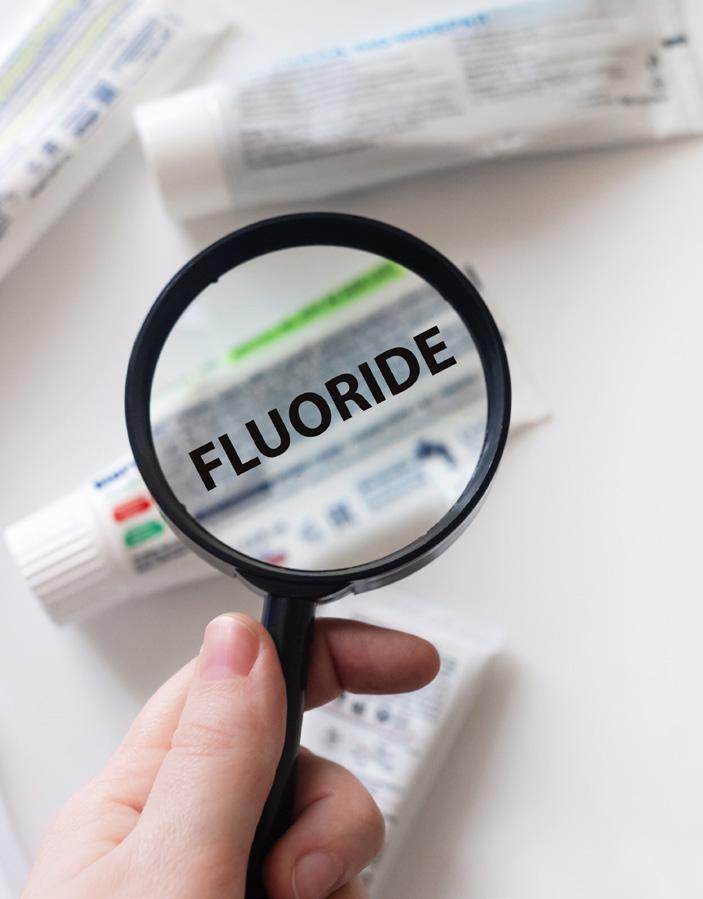
The U.S. Food and Drug Administration (FDA) plans to review and possibly remove prescription fluoride supplements for children from the market.
The FDA announced in May that it intends to conduct the review by Oct. 31. The agency has not yet said if it will ban the products or ask companies to stop selling them, CBS News reported. Fluoride is a mineral that makes tooth enamel stronger and reduces cavities, according to the U.S. Centers for Disease Control and Prevention (CDC).
It helps prevent and repair damage caused by bacteria that create acids in the mouth, which can lead to tooth decay and even tooth loss.
Poor dental health has been linked to other health problems, including heart disease. Experts told CBS News that regular dental care and good oral hygiene are the best ways to prevent cavities.
However, the FDA said in its news release that ingesting fluoride may “alter the gut microbiome,” adding that “other studies have suggested an association between fluoride and thyroid disorders, weight gain and possibly decreased IQ.”
U.S. Health Secretary Robert F. Kennedy, Jr. called the review of fluoride supplements “long overdue.” He has previously raised concerns about fluoride’s safety, saying it could cause health problems.
Q: What is the main service RCIL provides to clients?
A: We support individuals who have various disabilities to live in the community in their own homes, apartments, etc. We also help each person to live the life that they choose to live. What we say here at RCIL, “you have the right to be you.” We adhere to the philosophy that people with disabilities do not have to be changed; they do not have to be “fixed.”
Q: That is a very interesting statement. Oftentimes — and with all good intent — many people working in the profession of social work see a client as someone who needs to be fixed, that they are a broken person, but RCIL looks at the client through a different lens. Can you elaborate a bit more on this philosophy?
A: We are all different even though we all share a commonal-
A: Our funding comes from fee for service and grants, through state and federal funding. We also receive funding from foundations.
Q: I am sure that to run this organization it takes a dedicated staff. It seems that you have that and your employees are well taken care of. Am I correct?
A: Absolutely. We pay our employees well and our benefits are second to none.
For more information on RCIL and what they offer in the way of services as well as upcoming events visit www.rcil.com.
To reach RCIL by phone call, 315797-4642.
Many dental experts disagree. Dentist Aaron Yancoskie, associate dean at Touro College of Dental Medicine in Westchester County said in an interview with CBS News last November that there is “excellent, solid data going back 75 years, showing that fluoride is both safe and it’s extremely effective at decreasing dental decay, that is, cavities, by strengthening the enamel of our teeth.”
The FDA’s review follows Kennedy’s recent call to end the addition of fluoride to public water systems. He praised Utah for being the first state to do so.
“It makes no sense to have it in our water supply. And I’m very, very proud of this state for being the first state to ban it. And I hope many more will come,” Kennedy told reporters in Utah, CBS News said.

Really,
By Anne Palumbo
We hear a lot about “superfoods” these days — foods that offer high levels of desirable nutrients that are believed to offer simultaneous health benefits beyond their nutritional value.
These foods, as defined in the Merriam-Webster Dictionary, are “rich in compounds (such as antioxidants, fiber or fatty acids) considered to be beneficial to a person’s health.”
But what about “superbadfoods” — foods that offer high levels of undesirable nutrients that clog arteries, add pounds, raise blood pressure, trigger diseases, and shorten lives? Foods that we mindlessly eat or (gasp!) feed to our kids or grandkids? Where’s Merriam’s definition for those disastrous foods?
While there are dozens of unhealthy foods out there, we’ve mentioned some alarming — perhaps surprising — foods that our bodies could regularly do without.
Just how bad are they?
Well, when you compare what these superbadfoods offer up in a single serving against what the experts recommend for an entire day, you may be persuaded to rethink your eating habits.
Average daily recommendations from accredited institutions:
• Sodium: less than 2,300 milligrams per day (equal to about 1 teaspoon of table salt) and no more than 1500 milligrams per day with high blood pressure.
• Sugar: no more than 100 calo ries per day (about 6 teaspoons or 24 grams) for most adult women and no more than 150 calories per day (about 9 teaspoons or 36 grams) for most men.
• Fat: should contribute 20% to 35% of total daily calories (about 4578 grams) with no more than 20 to 30 grams of saturated fat.
ing you never fraternize with another Frito again. Moderation is the key here: daily, devoted, mindful moderation. As the saying goes, “Man and woman cannot live on junk food alone.”
What do years of regularly eating processed meats and health have in common?
Cancer.
According to the World Health Organization, regular consumption of processed meats — bacon, sausage, hot dogs, ham and cold cuts — has been associated with an increased risk of cancer (especially colon

• Cholesterol: no more than 200 milligrams a day (if risk factors for heart disease present); no more than 300 milligrams a day (if no risk factors).
• Overall calories: Calorie needs vary depending on the person and their personal health goals, but an average starting number is around 2,000 calories per day.
Of course, no one is suggest-

grams total fat (7grams saturated), and 660 milligrams salt. Three slices of bacon have 150 calories, 12 grams total fat (3 grams saturated), and 550 milligrams salt. With early-onset colon cancer rates on the rise for younger adults, it should give all of us pause. Many experts do say, however, that eating a small amount of processed meat occasionally, such as once or twice a month, is unlikely to significantly harm health.
is why many states have actively banned the sale of sodas in high schools. Coke Original, America’s most popular soft drink, has 2-3 times our average daily sugar needs in one serving! Why worry about consuming too much sugar? In the short term, it may contribute to acne, weight gain, tooth decay and fatigue. In the long term, excessive sugar consumption increases the risk of Type 2 diabetes, obesity, heart disease, certain cancers, high blood pressure and depression. Of course, some sugar (which the body converts to glucose) is essential for energy production and proper brain function.
Tips: Gradually replace soda with nutritious alternatives: water infused with fresh fruits and herbs, sparkling water with a splash of fruit juice, homemade iced or herbal tea, reduced-sugar fruit juices and smoothies, and good old plain water.
and stomach), as well as heart disease and diabetes. All meat that has been smoked, salted, cured, dried or canned is considered processed. Nitrates and nitrites — whether synthetic or natural (i.e. celery powder) — are the processing agents behind the elevated risk. Chemicals aside, many processed meats are high in calories, fat (especially saturated fat) and sodium. One classic Zweigles hot dog (minus the bun and fixings) has 220 calories, 19
Tips: Check out plant-based alternatives. Swap red-meat processed foods for white-meat processed foods, which generally have less total and saturated fat. Consider canned or pouched tuna or salmon instead of classic lunchmeats like ham, pastrami, roast beef or salami.
Drinking soda is like guzzling liquid candy, no thanks to its high concentration of sugar. Sugary drinks are a major contributor to our country’s obesity epidemic, which
Oh, how we love our Lay’s, Doritos, Cheetos and Rice Krispies Treats here in America! Indeed, they fly off our supermarket shelves to the tune of $52 billion per year. Despite being convenient and addictive to boot, chips, like most other ultraprocessed snacks, are astoundingly unhealthy (one serving of Lay’s classic: 160 calories, 10 grams of fat, 170 milligrams sodium). What’s more, they defy everything — everything — a snack is supposed to do: give your body a nutrient-dense, long-lasting pick-me-up between meals. Research has shown that because today’s ultraprocessed snacks contain a lot of fat, sugar, salt and carbs, they are better at activating the brain’s reward system. Translation? We can’t stop eating them. The unfortunate consequences? We develop many of the same chronic diseases as those associated with sugar-loaded soft drinks.
Tips: Opt for snacks with protein, fiber, and healthy fats that take longer to digest and help keep you full throughout the day. A few suggestions: nuts, Greek yogurt

with fruit, hard-boiled eggs, cheese with whole-grain crackers, popcorn, homemade trail mix and protein smoothies.
Although soups may be the perfect meal when you’re feeling chilly, under the weather or not particularly hungry, some canned and chain-restaurant soups are not so perfect for your health. From sodium to fats, calories to cholesterol, soups can foil your good intentions in just a few slurps. Are you sitting down?
One cup of Campbell’s Chicken Noodle Soup, their most popular soup, has 1780 milligrams of sodium — a whopping 78% of daily needs knocked off in one bowl (over 100% for those with high blood pressure). Panera’s popular broccoli cheddar soup has 1560 milligrams of sodium without the bread bowl and a staggering 2140 milligrams with. While sodium is an essential nutrient that controls blood pressure and is needed to make nerves and muscles work properly, too much sodium can lead to high blood pressure, heart disease, kidney strain, and stroke. It can also drain calcium from bone.
Tips: When dining out, choose broth-based soups over cream-based; when buying canned, opt for lower-sodium broth-based soups; and when making soup, go easy on the salt, substitute cream or whole milk with reduced-fat milk, use whole grains versus refined, and up the veggies.
Most of us think salads are automatically healthier foods: low in calories, sodium, and fat; high in vitamins, protein, and fiber. The ones we make at home: perhaps; the ones we order out: perhaps not. For example, Chick-fil-A’s Cobb salad with avocado-lime ranch dressing—high in calories (830), fat (60 grams), and sodium (2220 mg)—is no day at the healthy-diet beach! And building a Chipotle salad with lettuce, chicken, guacamole, corn, cheese, and chipotle-honey vinaigrette, chased with a side of queso blanco and chips, could quickly turn that healthy-sounding lunch into a calorie bomb. Nonetheless, salads are an important part of a healthy diet because they are a year-round source of essential vitamins, nutrients, and beneficial antioxidants that can help reduce the risk of chronic diseases such as heart
disease, diabetes, cancer, and obesity.
Tips: Whether taking out or making at home, assemble salads wisely: forgo caloric toppings (bacon bits, croutons, candied nuts) and baked shell bowls, go for dark greens, add healthy protein sources, bump up the veggies, opt for vinaigrette- or yogurt-style dressings over cream-, cheese-, or mayo-based ones, and request dressing on the side. Oh, and stay away from “crispy” and “crunchy” protein sources, as the description implies “deep-fried.”
From French fries to onion rings, doughnuts to funnel cakes, many of us find fried foods irresistible. Unfortunately, compared to other cooking methods, deep frying adds a lot of calories and fat. For example, one small baked potato contains 120 calories and 0.2 grams of fat, while the same amount of French fries contains 430 calories and 20 grams of fat. What’s more, fried foods are typically high in trans fats, the worst kind of fat you can eat. Unlike other dietary fats, trans fats do a number on cholesterol: raising “bad” while lowering “good.” Research has shown that a diet laden with trans fats increases the risk of heart disease, the leading killer of adults. But the badness of fried foods doesn’t end there. Regularly eating fried foods puts you at a greater risk of developing Type 2 diabetes and obesity, two conditions that, over time, can lead to high blood pressure, some cancers, nerve damage, sleep apnea, dementia, heart disease, asthma, and more. Yikes.
Tips: Avoid or severely limit your intake of fried foods. When frying at home, choose safer, more stable oils: coconut, olive, or avocado over canola, corn or sesame oil (to name a few). Consider healthier cooking methods: steaming, roasting, stir- or air-frying.
Read product labels and restaurant menus carefully, from nutritional information to ingredients. Consider how something is prepared: baked versus fried. Think about health in the long run, from yourself to your loved ones to those on the way.
Anne Palumbo writes the column Smart Bites, which is published every month in In Good Health.












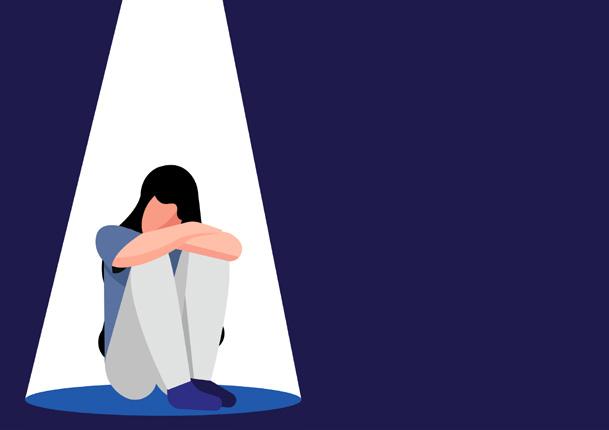
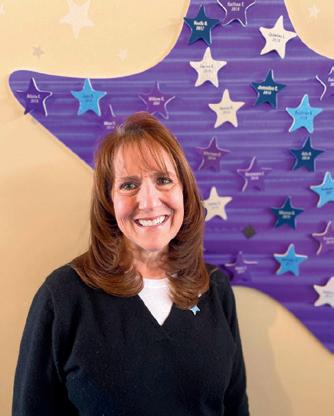






By Anne Palumbo
Idon’t eat a lot of meat
these days, but when I do, it’s usually chicken and if it’s chicken, it’s typically thighs. Plump, juicy, flavor-packed thighs that are more affordable and more forgiving when overcooked.
Why chicken over beef, especially now during grilling season when the prospect of a char-grilled burger still makes me salivate?
The more I learn about beef’s negative impact on the environment—much worse than chicken!— the less I’m inclined to eat it.

On top of that, chicken generally has fewer calories, less cholesterol and less fat than beef, especially saturated fat, the unhealthy fat that raises bad cholesterol.
Both chicken breast and thigh are excellent sources of protein, a powerhouse nutrient that plays a crucial role in building and repairing tissues, supporting the immune system and fueling metabolic processes.
What happens when we don’t get enough protein? Research shows that, over time, a protein deficit can make you lose muscle mass, slow your metabolism, and also lead to anemia, all of which makes you weak and tired.
Furthermore, people who are low in protein often find their injuries—from cuts to sprains to broken bones—are slower to heal. Same goes for colds, sore throats, and the flu: a lack of protein can weaken the immune system, contributing to longer recovery times when you do get sick.
On the fat and calorie front, chicken generally has fewer calories and less fat than beef, making it a better choice for weight management.
To compare: a 3-oz 80/20 hamburger patty has about 230 calories
and 15 grams of fat (with nearly 6 of that saturated fat) while the same amount of skinless chicken breast has only 120 calories and 1 gram of fat (with no saturated fat). Skinless chicken thighs have about 150 calories and 7 grams of fat (with 2.5 of that saturated fat). Chicken is also rich in many B vitamins, particularly niacin, as well as the trace mineral selenium. People who are mildly deficient in niacin, an essential vitamin that helps keep the nervous system, digestive system, and skin healthy, may experience skin rashes, diarrhea, and mental confusion or memory loss. An antioxidant superstar, selenium improves thyroid health, boosts the immune system, and helps prevent cognitive decline.

Anne Palumbo is a lifestyle columnist, food guru, and seasoned cook, who has perfected the art of preparing nutritious, calorie-conscious dishes. She is hungry for your questions and comments about SmartBites, so be in touch with Anne at avpalumbo@aol.com.
Since not all chicken is prepared the same, you should limit or avoid certain types that may be higher in unhealthy fats, carbs, salt and calories, such as fried and breaded chicken, rotisserie chicken, and heavily processed lunchmeat. Choosing poultry raised without antibiotics is an important way to help fight back against antibiotic resistance. Finally, no hormones are ever used in the production of any US chicken.

Serves 4, Seasoning adapted from Chef Kia Damon; crema adapted from loveandlemons.com
Lime crema ingredients:
1 cup whole milk Greek yogurt
or sour cream
2 tablespoons mayonnaise
1 tablespoon fresh lime juice
1 small garlic clove
½ teaspoon salt
¼ teaspoon onion powder
½ cup fresh cilantro
Blackened chicken ingredients:
½ tablespoon kosher salt
1 tablespoon paprika (regular or smoked)
½ tablespoon dried thyme
½ tablespoon dried oregano
½ tablespoon dried garlic powder
½ tablespoon dried onion powder
1 teaspoon mustard powder
¼ teaspoon ground cayenne (optional)
½ tablespoon vegetable oil
4-6 boneless, skinless chicken thighs, trimmed
1. Remove chicken from refrigerator to allow it to come to room temperature.
2. Make the lime crema: In a food
Consuming too much cinnamon might affect how your body absorbs some medications, new research shows.
The study — published in the June issue of the journal Food Chemistry: Molecular Sciences — looked at how cinnamon and its key ingredients affect the way the body processes drugs, The Washington Post reported.
While small amounts of cinnamon can offer health benefits,
researchers say using it too often or in high amounts may lead to drug interactions.
“We know there’s a potential for cinnamaldehyde to activate these receptors that can pose a risk for drug interactions,” lead researcher Bill Gurley, principal scientist at the University of Mississippi’s National Center for Natural Products Research, told The Post.
Researchers simulated digestion to study cinnamon oil and its key
compounds: cinnamaldehyde and cinnamic acid.
They found that both could activate the body’s xenobiotic receptors. These are sensors that help control how the body processes medications. Overuse of cinnamon could cause the body to clear some drugs too quickly, making them less effective, The Post reported.
The study didn’t say exactly how much cinnamon is too much, but researchers warned that concentrated
processor, place the yogurt, mayo, lime juice, garlic, salt, and onion powder. Process until creamy.
3. Add the cilantro and pulse until the sauce is smooth but green flecks are still visible. Season to taste. (Can be made ahead and stored in the refrigerator for up to 5 days.)
4. Make the blackening seasoning: In a small bowl, combine all the dried seasonings.
Prepare the chicken: Pat dry, then rub thighs lightly with oil and coat all sides with blackening seasoning. Set aside while you prepare the grill.
5. Place thighs on grill and cook until the seasoning darkens. After 5 minutes, flip the chicken and cook for another 3 minutes.
6. When ready to serve, slice the chicken on a bias into ½-inch pieces or leave whole; serve alongside lime crema.
forms, like supplements, carry more risk. They advise patients to check with their doctor before using cinnamon supplements or other similar products.
Cinnamon has become more popular in recent years, especially among people with Type 2 diabetes. In fact, a 2024 report predicts the global cinnamon market will grow by $412.9 million between 2024 and 2028, partly because of its use in health and pharmaceutical products.
More studies are needed to fully understand how cinnamon may interact with medications.
“That’s what could happen, but we won’t know exactly what will happen until we do a clinical study,” Gurley said.
Men are much more likely than women to die early from the world’s 20 leading health problems, a new global study shows
Sickness and death was higher in men than women in 2021 for 13 of the top 20 causes of injury and illness, including COVID-19, traffic injuries, heart problems, lung ailments and liver diseases, researchers reported May 1 in The Lancet Public Health.
“Our findings shine a light on the significant and unique health challenges faced by males,” co-lead investigator Vedavati Patwardhan, a research scientist with the University of California-San Diego, said in a news release.
“Among these challenges are conditions that lead to premature deaths, notably in the form of road injuries, cancers and heart disease,” Patwardhan continued. “We need national health plans and strategies to address the health needs of men throughout their lives, including interventions targeting behavioral risks such as alcohol use and smoking that typically begin at a young age.”
Women tend to live longer, but they endure higher levels of illness during their lifespan, researchers added.
Muscle and bone conditions, mental health problems and headaches are among the non-fatal diseas-
es that plague women, results show.
For the study, researchers analyzed data from the Global Burden of Disease Study 2021, the largest and most comprehensive effort to track illness and death from disease around the world.
The effort focused on health differences between conditions that affect both men and women, excluding gender-specific illnesses like ovarian or prostate cancers.
Results showed that men experienced 45% more illness and death from COVID-19 than women, with the largest differences seen in sub-Saharan Africa, Latin America and the Caribbean, researchers said.
“The timing is right for this study and call to action—not only because of where the evidence is now, but because COVID-19 has starkly reminded us that sex differences can profoundly impact health outcomes,” senior researcher Luisa Sorio Flor, an assistant professor with the Institute for Health Metrics (IHME) and Evaluation at the University of Washington in Seattle, said in a news release.
Heart disease had the next largest impact on male health compared to females, with men experiencing 45% more illness and death com-

pared to women.
Men experienced the greatest heart-related burden in Central Europe, Eastern Europe and Central Asia, where they were 49% more likely to be sick or die from heart disease.
Conditions that affect men more than women tend to involve smaller increased risks at younger ages, but the gap widens as people grow older, researchers found.
The exception was road injuries, which disproportionately affected young males aged 10 to 24 around the world.
Low back pain was the biggest contributor to illness among women, with females suffering rates more than a third higher than men in 2021, researchers said. Women in high-income countries, Latin America and the Caribbean were particularly affected.
Unlike men, women tended to start early in life suffering from conditions that affect them more, and those conditions intensify with age.
“Large causes of health loss in women, particularly musculoskeletal disorders and mental health conditions, have not received the attention that they deserve,” co-lead researcher
Select stories
• Five things to know about menstrual cramps
• Stresswe’re all stressed out; how to relieve it
• Five things to know about menstrual cramps
• Things to do to improve a woman’s health
• Strength training Why is it important?
• Healthy nails. Ways women can improve their fingernail health.
Advertise to reach thousands and thousands of health-conscious readers
In Good Health
Gabriela Gil, a research fellow with IHME, said in a news release. “It’s clear that women’s healthcare needs to extend well beyond areas that health systems and research funding have prioritized to date, such as sexual and reproductive concerns.”
These results dovetail with another study published May 1 in PLOS Medicine which found that men are more likely than women to die from high blood pressure, diabetes and HIV/AIDS, typically because they shrug off medical care.
The new study highlights “how females and males differ in many biological and social factors that fluctuate and, sometimes, accumulate over time, resulting in them experiencing health and disease differently at each stage of life and across world regions,” Flor said.
“The challenge now is to design, implement, and evaluate sex- and gender-informed ways of preventing and treating the major causes of morbidity and premature mortality from an early age and across diverse populations,” Flor concluded.
SOURCE: Institute for Health Metrics and Evaluation, news release, May 1, 2025

By Barbara Pierce
“They’ve lost their voice! They don’t have any communication skills at all. They don’t know how to talk to girls their age, to me or to anyone.”
This is how ferry boat captain Bruce Pierce of Miami, Florida, describes the young men, just out of high school, that he supervises. “They’re not learning how to be men.”
“They’re all engaged on their phones, totally addicted to the instant gratification,” is how high school instructor Stephanie Martino, also of Miami, describes the high school boys she teaches.
Martino has been dealing with high school students for 32 years. “I’ve seen a shift in the last few years. It’s all because they don’t know how to be themselves without their phones.”
“And many young men are ‘gamers,’” she added. “They spend hours and days on their computers. That’s all they do; there’s no room for socialization.”
“A lot of young people don’t want to work. Staffing is a huge challenge,” said Kim Epeards, manager of a senior residential facility in Venice, Florida, that relies heavily on the work of young people. “They live with their parents. Many haven’t worked for a year or two.”
Yes, young men are struggling. Look at the alarming data:
• Women graduate college at significantly higher rates than men in the U.S.
• Men are dropping out of the workforce, overdosing, drinking themselves to death.
• The suicide rate for men is four times that of women.
• Nearly half of male teens have never dated, almost double the rate of previous generations.
• Many young men report having no close friends.
Young women are struggling too. But the data is clear that the significant changes over the last few years have impacted young men to a larger degree.
Social scientists agree that young men are floundering, though they disagree about the causes, which are vast and complicated.
One significant cause may be how we view masculinity. There’s been a recent rise in internet masculinity culture which suggests that real men are aggressive, dominant, take what they want and are obsessed with winning. This steers impressionable teens in the wrong direction.
What’s the solution? “I don’t see a solution,” Pierce said. “I’d like to just get old and die so I don’t have to witness this tragedy!”
As a community educator for the YWCA Mohawk Valley, DuWayne Engram offers a solution for our community: “It’s absolutely true, that, as young boys grow, they become obsessed with their phones and video games. They’re considered weird by

Community educator for the YWCA Mohawk Valley, DuWayne Engram: “We bring boys together in a safe place and encourage them to be part of the solution, not part of the problem.”
their friends it they’re not into social media.
“Our community education department at the YWCA addresses these issues. The AMEND Together program has been running for five years. We bring boys together in a safe place and encourage them to be part of the solution, not part of the problem. We help them change the culture around them; they are the solution.”
AMEND Together is a primary prevention initiative dedicated to ending violence against women and girls by engaging men and boys to change the culture that supports violence. It seeks to challenge the culture that supports violence, cultivate
Erectile dysfunction is one of the most common but least discussed health concerns affecting men particularly as they age, said Christopher Emerson, physician assistant, Upstate Urology at Mohawk
By Barbara Pierce
Valley Health System.
As many advances have occurred in both diagnosis and treatment of ED, we asked Emerson to update us about this common condition.
1.. What is ED?
“ED is defined as the persistent inability to achieve or maintain an erection firm enough for satis-
healthy masculinity in men and boys and change the future for women and girls.
“We work with schools and other organizations, any boy in that school or that organization can join our club. We reach down to a young age, down to third grade,” Engram added.
The schools and organizations involved in the program include Gregory B. Jarvis Middle School, Holland Patent Middle School, Midtown Utica Community Center, Rome City School District and Utica University. How are boys responding to this program?
“They respond great!” said Engram. “Our clubs allow them to talk about things they couldn’t’ talk about elsewhere. They’d be demeaned if they talked about these things elsewhere.
“We want to change what boys are being taught about male masculinity. We don’t focus on performance-based expectations. We don’t talk about anything having to do with performance. We talk about how do you feel. We talk about what it means to be a man. We’re building healthy manhood. We’re teaching the boys that ‘You don’t have be tough; you can be your true self.’ It’s OK to be who you are. Even when you don’t feel tough or strong or aggressive.”
“I’d like people know that there is hope for boys and men. We try to reach as many boys as we can,” he added. “We’re changing the culture for boys.”
Schools and organizations interested in learning more about hosting AMEND Together can see ywcamv.org/AMEND or contact info@ywcamv.org. This curriculum is provided free.


factory sexual intercourse,” Emerson said. “It’s sometimes referred to as impotence, although that term is now less commonly used in medical practice. It can affect not only physical intimacy but also emotional well-being, relationships and overall quality of life. Thankfully, ED is highly treatable once properly understood and addressed.
“ED can occur occasionally, especially during times of stress or fatigue. But if it happens regularly, it may indicate an underlying health issue that requires medical attention.”
2.How common is ED?
ED becomes increasingly common with age. Studies show that approximately 50% to 70% of men over the age of 60 experience some degree of ED; 30% to 40% of men between ages 40 and 59; and about 5% of men younger than 40.
These numbers may be underestimates, as many men are reluctant to bring up the issue with their healthcare provider.
3.What are the main causes?
“ED can have a variety of causes, often categorized into physical, psychological or lifestyle-related,” he explained. For most men, erectile dysfunction is caused by physical problems, usually related to the blood supply of the penis.
First, there are vascular or heart, issues. Poor blood flow to the penis
By Barbara Pierce
By Barbara Pierce
Dear Casey: I’m writing this to you, my grandson, on your 19th birthday. It isn’t easy, transitioning from a boy to a man as you’re doing. I’m sure it’s very difficult. But it’s such a critical time in your life.
My wish for you is that you learn to be a “good” man, not a “real” man.
You haven’t had good male role models. Your biological dad failed you in every way. He wasn’t a good man. He failed by being mostly absent from your life as you grew up. When he came around, it was to blame you for his substance addiction. You are not to blame, not in the slightest.
Your stepdad has been in your life since you were a baby. Yes, he works regularly; he’s responsible. And that’s important. But he hasn’t really offered you the model of a good man. He’s not in touch with his feelings and he’s not comfortable when others express their feelings. He is fearful of showing his vulnerabilities.
Your grandpa, your dad’s dad, has been important to you; he’s been involved with you, caring about you, all your life. And he’s a good man; he’s taught you some of the many things you need to know about becoming a man. He’s able to show his vulnerabilities.
To fill the gaps for you, here are some of the things I’d like you to
due to clogged arteries (atherosclerosis), high blood pressure or vascular disease is one of the most common causes.
“Neurological conditions can also interfere with nerve signals that are necessary for an erection. These include disorders such as multiple sclerosis, Parkinson’s disease or spinal cord injuries,” he said.
Hormonal imbalances, such as low testosterone levels or thyroid dysfunction may contribute to ED. Elevated estrogen levels or side effects from hormone therapies may also play a role, he added.
Psychological factors, such as anxiety, depression, stress and relationship difficulties can interfere with sexual performance and desire.
know as I believe they are important for every young man to know and live by in becoming a man.
You’ve always been helpful and thoughtful of others. You’ve reached out to help others. This is so important and I am so proud of you for continuing to have this characteristic as you become a young man.
You have a girlfriend that you feel strongly about. Stay loyal to her, respect her and her feelings. Encourage her to develop her potential as you develop yours.
Do not get hooked on porn, which is so easily accessible on your phone. It will ruin you for real sex in real life. Absolutely do not watch porn.

Likewise, be open to asking for help and accepting help when you need it. It’s not necessary — it’s really not even OK — to try to “tough it out,” or “suck it up.” Doing that only leads to problems.
Don’t be fooled by the examples of men that are prominent on social media. They promote the idea that men must be dominant, aggressively taking what they want and obsessed with winning. This is total garbage. Please don’t fall for it. This is unhealthy for any man to try to follow.
Don’t avoid your feelings; be OK with your feelings and be OK talking about them to people you trust.
severity of ED symptoms, underlying health conditions, medications being taken and lifestyle habits,” said Emerson.
Laboratory tests may include blood sugar levels, to rule out diabetes, cholesterol and lipid panel, testosterone and other hormone levels.
In some cases, additional testing such as a penile Doppler ultrasound or nocturnal erection monitoring may be recommended, he added.
Work at something you love; keep searching until you find the right fit for you. Having a purpose in life is so important; we all need a purpose. For some lucky people, it’s connected to their employment. If you jump out of bed in the morning, excited about what your workday will bring, then it’s likely your career is closely tied to your purpose. You’ll be fortunate.
If you don’t find purpose in your job, find it in things outside of work. Because, your purpose is what makes you happy! It’s what puts sizzle in your life, what you love to do. It makes you feel like who you are in the world matters. It benefits something or someone that you care about.
In short, a sense of purpose is very strongly associated with mental and physical well-being — and that’s why it is core to most scientific definitions of what it means to be happy in life. It’s that big.
When things don’t go the way you want them to, learn from the
If low testosterone is found to be the cause, hormone replacement therapy may be considered.
Emerson added that there are mechanical devices that may be recommended, such as Vacuum Erection Devices that create an erection by drawing blood into the penis. Or constrictive rings can be used to maintain the erection once achieved.
There are medications that can be injected directly into the penis or placed into the urethra to stimulate blood flow.
“ED can occur occasionally, especially during times of stress or fatigue. But if it happens regularly, it may indicate an underlying health issue that requires medical attention.”
Then there are lifestyle factors: smoking, obesity, lack of exercise, excessive alcohol consumption and drug use all can increase the risk of ED, he said.
Age is a strong indirect risk factor in that it is associated with increased likelihood of the health issues, some of which are listed above.
4.How is ED diagnosed?
“Diagnosis starts with a detailed medical history and a physical examination. The healthcare provider may ask about: frequency and
5.What treatment options are available?
“Erectile dysfunction is a common issue with a wide range of causes. But it’s also highly treatable,” he said. “Treatment is highly individualized and depends on the underlying cause.”
Effective for many men is medication taken orally, like sildenafil (Viagra), tadalafil (Cialis) and vardenafil (Levitra). These medications increase blood flow to the penis.
experience. See these obstacles as ‘challenges,’ not ‘problems.” Learn from them so you don’t repeat the same challenges.
Continue to learn new things throughout your life. Learn from the experiences of others.
You’re still good friends with a couple of your friends from high school. Keep involved with these friends as you develop new friendships. Male and female friendships are critically important to us all.
Men need friends for their mental and physical well-being, providing support, companionship and a sense of belonging. Strong friendships help you get through stressful times.
You’re close to your mom and your sister. This is great. Continue seeing them as women you can trust, continue to respect them and their opinions and feelings.
Honor your word. When you make a commitment, honor that commitment. This is critically important to succeed in the world.
Finally, be true to your values; be true to who you are, to yourself. Being true to yourself means living in agreement with your own values, beliefs and desires, instead of conforming to external pressures or expectations.

Barbara Pierce is a retired licensed clinical social worker with many years of experience helping people. If you would like to purchase a copy of her book, “When You Come to the Edge: Aging” or if you have questions for her, contact her at barbarapierce06@yahoo.com.
Penile implants or surgically inserted devices may be an option for men who do not respond to other treatments.
“Counseling or therapy can be particularly helpful if psychological issues such as anxiety or depression are contributing to ED,” he said.
And lifestyle changes, such as improving one’s diet, quitting smoking, reducing alcohol intake, managing stress and increasing physical activity can all help restore erectile function.
This is the bottom line, he suggested: Men experiencing symptoms should feel empowered to speak openly with their healthcare provider. Addressing ED not only improves sexual health but can also lead to the

diagnosis and treatment of other potentially serious medical conditions, such as heart disease or diabetes.
“Men that bring their sex partners to appointments regarding erectile dysfunction have significantly better outcomes,” he added. “Don’t suffer in silence. Help is available and it often begins with just one conversation.”
By Barbara Pierce
One in five of adults in the U.S. adults experience mental illness each year. That’s huge.
More than 20% of our population has mental illness issues. This statistic comes from research done by the National Institute of Mental Health and the National Alliance on Mental Illness.
NAMI defines mental illness as a medical condition that disrupts a person’s thinking, feeling, mood, ability to relate to others and daily functioning. It’s a condition that affects a person’s mental state and can impact their ability to cope with daily life. Mental illness affects not only individuals but also their families, friends and communities. It can impact work, school, relationships and overall well-being.
“The vast majority of those with mental illness have anxiety or depression,” said Jeremy Montague, director, NAMI Syracuse.
Young people, aged 18 to 25, have the highest prevalence of anxiety.
“This is not new data,” said Montague. “It goes back a decade. For the study, a diagnosis of mental illness
was based on DSM-5 criteria.” DSM (Diagnostic and Statistical Manual) is the main guide and most valuable tool for mental health providers to diagnose mental illness.
“There are several different types of anxiety,” added Montague.
Anxiety disorders cause people to experience distressing and frequent fear and apprehension. While many of us may have these feelings during a stressful event, those with anxiety disorders feel them often and in non stressful events.
“Anxiety” is a blanket term that includes many specific disorders, including generalized anxiety disorder, characterized by excessive worry about everyday issues and situations, worrying out of proportion to the reality of the situation, obsessive-compulsive disorder, panic disorder, post-traumatic stress disorder and social anxiety disorder.
Depression can significantly impact daily life, affecting how individuals think, feel and behave. People with depression often experience a prolonged period of sadness, emptiness or irritability, lose interest in activities, may have changes in sleep,
appetite, energy level and ability to concentrate. Depression can interfere with work, school, relationships and other important aspects of life.
Mood disorders are also a common mental illness. While it’s normal to experience mood swings from time to time, people with mood disorders live with more persistent and severe symptoms that can disrupt their daily lives. Depending on the specific disorder, people may experience an ongoing sad, anxious or “empty” mood; feelings of hopelessness; low self-esteem; excessive guilt; decreased energy and more.
The most common mood disorders are bipolar disorder, characterized by unusual, extreme shifts in an individual’s mood, activity levels, energy and concentration. This condition was previously called manic depression. The other common mood disorder is
Substance-induced mood disorder that occurs because of abusing substances.
About 5.5% of the adult population has a psychotic disorder, a condition like schizophrenia, bipolar disorder or long-term major depres-
More talk and fewer pills are being employed to help Americans maintain their mental health, a new study says.
Psychotherapy is assuming a larger role in mental health care, while medications prescribed without accompanying therapy are becoming less common, according to results published in early May in the American Journal of Psychiatry.
“After years of American mental health care moving toward greater use of psychiatric medications, the pendulum has started swinging back toward psychotherapy,” lead researcher Mark Olfson said in a news
sion. Those suffering from a psychotic disorder may be unable to understand what’s real and what’s not.
Some people think it’s weak to admit they’re going through a tough time. But if you have anxiety, depression or another mental illness, you can’t just ‘snap out of it’ or ‘pull yourself together.’ There’s much more to it than that.
The study found that, of those with mental illness, approximately 50% received mental health treatment in the past year. Therapy and medications do help treat mental illness.
“There are resources for treatment,” said Montague. NAMI does not offer therapy, but facilitates groups for those affected.
If you or a family member are struggling with any of these common mental illnesses, reach out for help. The NAMI Helpline is available Monday through Friday, from 10 a.m. to 10 p.m. Call 800-950-6264, or text “NAMI” to 62640, or chat online. In a crisis, call or text 988, 24 hours a day, seven days a week.

release. He’s a professor of epidemiology and psychiatry at Columbia University Mailman School of Public Health.
Of Americans relying on outpatient mental health care, the percentage relying on psychotherapy alone rose to 15% in 2021 from less than 12% in 2018, researchers found.
At the same time, those relying on medication alone to help their mental health dropped from 68% to 62%, results show. These drugs included antidepressants, antipsychotics and ADHD meds.
However, the percentage of patients receiving psychotherapy from
psychiatrists declined from 41% to 34%, researchers said.
“Psychiatrists provided psychotherapy to a decreasing percentage of all psychotherapy patients, which may have increased the need for psychiatrists to refer patients to and collaborate with non-physician psychotherapists,” Olfson said.
“At the same time, social workers and counselors, but not psychologists, assumed a larger role in providing psychotherapy and there was an increase in the average number psychotherapy visits per patient,” he continued.
People also seemed more willing
to stick with talk therapy, with more than 17% in 2021 saying they went to more than 20 sessions compared to less than 14% in 2018.
At the same time, the number of people who stopped therapy after one or two sessions declined from 34% in 2018 to 28% in 2021.
“Americans are becoming more willing to seek out and stick with psychotherapy,” Olfson said.
For the study, researchers analyzed data from four surveys of Americans, focusing on nearly 18,000 people who participated in mental health care visits.
Excellus BlueCross BlueShield
“A close friend once told me that I was a people person and should use that ability as a social worker,” Megan Bunce recalls.
That advice, shared more than 15 years ago, led Bunce to a career that has improved hundreds of children’s lives. Bunce, a licensed social worker at Excellus BlueCross BlueShield, works with some of the most vulnerable people in our society.
She began her role in the foster care program in 2023. Each year, this team provides case management to more than 1,000 children. More than that, though, the program provides stability, hope and a chance for a healthier future in a system that includes over 25,000 boys and girls in New York state.
Excellus BCBS may be best known for offering health plan options, but the nonprofit prides itself in its wide-ranging work around access and quality care. That includes children in foster care.
“I remember helping a little girl who had been struggling with her vision for years,” Bunce recalls. “Together with her foster care case manager, we identified a provider, got the coverage approved and lined up the appointment where she was prescribed glasses. This may seem simple to some, but it’s often these types of things people take for granted that make a significant difference in a child’s life.”
The foster care team ensures medications are being used properly, vaccines are completed, and
well-child visits are scheduled. Staff members also address any other gaps in care that may arise.
While the work is rewarding, it can often be difficult, according to Lindsay Rachow, a licensed mental health counselor and manager of the foster care program. “As you can imagine, these young members’ stories can be challenging to read,” she says. “It takes a special person to serve in this role. Bunce’s ability to connect with people is what makes her work so impactful.”
Bunce appreciates that her work is seen and felt. “Never have I looked back and regretted the decision to move forward with this career,” she says.
JeanMarie Armellino, a social worker from the Children’s Home of Wyoming Conference, understands the complexity of these children’s needs. “Our continuous communication with the [Excellus BCBS] foster care team empowers us to respond swiftly to the children’s needs while fostering a more integrated approach to care,” she says.
The partnership with local foster care programs began in 2013, when Excellus BCBS launched an initiative to ensure children in foster care receive necessary services and support.
“Too often, the challenges faced by those aging out of the foster care system can lead to housing instability, unemployment and substance use,” Rachow says. “The need for comprehensive support throughout
More people die from heart problems during heatwaves where high temperatures stretch through both the day and night, a new study says.
Heatwaves that offer no relief at night -- known as compound heatwaves — are much more deadly than soaring daytime temperatures alone, researchers reported April 1 in the Journal of the American College of Cardiology.
People are 86% more likely to die from a heart-related condition during a compound heatwave, compared to a 19% increased risk from daytime-only heatwaves and 16% from nighttime-only heatwaves, researchers said.
“Traditional heatwave definitions fail to capture the full scope of these risks,” senior researcher Renjie Chen, a professor at Fudan University School of Public Health in Shanghai,
China, said in a news release.
For the study, researchers analyzed data for nearly 2.4 million heart disease deaths that occurred in mainland China from 2013 to 2019, comparing them to hourly temperatures.
Results showed that risk of heart-related death increases steadily during a compound heatwave, while risk tends to peak and then decline during daytime or nighttime heatwaves.
People were particularly more likely to die from sudden cardiac arrest, heart attack and heart failure during a compound heatwave, researchers found.
For example, compound heatwaves brought an 86% increased risk of death from sudden cardiac arrest, compared with a 37% increased risk from nighttime and 24% increased risk of daytime heatwaves.

their life is critical.”
For example, when the Excellus BCBS foster care team receives a notification that a member in its care has had an emergency department or inpatient hospital visit, staff members take immediate action. They seek to understand the reason for the visit, providing education on urgent care versus emergency visits and ensuring that safety planning, medication changes and follow-up care are in place.
“Teamwork allows us to become a trusted resource for families, filling gaps in care and providing support
during critical transitions,” Bunce explains.
Children in foster care are twice as likely as other children to have learning disabilities, three times more likely to have ADD or ADHD and seven times more likely to suffer from depression, according to the Journal of American Medical Association (JAMA). These alarming statistics underline the necessity of the services that Excellus BCBS provides.
“Youth in the foster care system often face unique social determinants of health challenges,” Bunce says. “It’s common for them to have higher rates of mental health conditions like anxiety and depression, as well as chronic health issues like obesity to asthma. They’re at a greater risk for a myriad of health problems compared to their peers. Our work is vital.”
Both Bunce and Rachow say their support extends beyond case management. They offer training to foster parents, encouraging them to attend the children’s advisory committee meetings held twice a year, covering topics like substance use and selfcare for caregivers. They also ensure that children’s wishes are considered when making decisions about their medical needs, working closely with caseworkers to respect each child’s voice.
“The work we are doing serves as a powerful reminder that when we come together to support one another, we can create lasting change and brighter futures for those who need it most,” Bunce says. “I have found meaning in being the person families could rely on. When they look back, they can say, ‘Bunce was there for our family’ — those are the moments I will never forget.”
To hear Megan Bunce’s story, go to www.youtube.com/ watch?v=TE2vUYBUPbw
To learn more about the foster care program at Excellus BCBS, visit excellusbcbs.com.

Likewise, heart attack deaths were 88% more likely during a compound heatwave versus 16% during a nighttime and 13% during a daytime heatwave.
And heart failure deaths were 97% more likely in a compound heatwave, but just 24% more likely in either a daytime or nighttime heatwave.
These results show that more effort needs to be put on protecting people from continual heat, such as providing cooling shelters in cities
and improving climate control in homes, researchers said.
“Given the increasing frequency and intensity of compound heatwaves due to climate change, our findings highlight the need for disease-specific prevention strategies and revised public health guidelines to better protect at-risk populations,” Chen said.
Researchers next plan to project how many people are likely to die from heatwave-related heart problems under different climate change scenarios.
By Deborah Dittner
By Deborah Dittner
Sleep hygiene is important for each and every one of you as sleep affects your everyday health providing energy, mood, heart health and more.
In today’s society, many are sleep deprived due to the position you hold (nurse, medical resident, firefighter, EMT, truck driver, airplane pilot, police, new parent), or possibly an underlying medical condition.
Whatever the situation, sleep health needs to be addressed in order to maintain overall health let alone the day-to-day functions and well-being. Are you falling short of your sleep needs?
Consistency of a sleep–wake cycle provides you with good sleep hygiene.
Going to bed at the same time and rising at the same time for seven to nine hours of actual sleep will provide you with the regeneration of body, mind and spirit.
Adding a regular exercise program will help to provide the necessary ingredients for the brain and body for deep sleep. Your exercise program may include your family or dog as walking together for morning sun exposure, or after lunch or dinner will also help provide the needed vitamin D necessary for quality sleep. Consider having your vitamin D level checked with your health care provider as you may need supplementation.
Develop a routine at bedtime approximately 30 minutes to one hour
before you actually climb into bed. For example:
• Take a warm bath with Epsom salts adding lavender essential oil to induce sleep.
• Enjoy a relaxing cup of herbal tea such as chamomile or passion fruit at least 90 minutes before bedtime.
• Breathing techniques such as box breathing or 4-7-8 breathing helps to quiet the mind.
• Reading a book or magazine can create relaxation.
• Yoga postures such as child’s pose, legs up the wall and corpse pose are soothing.
• Acupressure points (1) placing your thumb on the point between your eyebrows at the top of your nose applying pressure for about 20 seconds to a minute then release and (2) pressing the sole of your foot approximately one third from the tips of your toes or using a tennis ball rolled over this area.
• Calming, relaxing music or a sound machine can help quiet the mind.
• Eliminate light by adding darkening shades or curtains especially if you live on a heavily lit street.
• Avoid the use of electronic devices (computer, iPad, iPhone, TV) at least one hour prior to bedtime as these devices are stimulating, not allowing for a restful night’s sleep.
• Avoid the use of alcohol, caffeine,
By Eva Briggs, MD

smoking and sugar as these too are stimulants.
• Avoid eating a large meal at least three hours before going to bed on a full stomach. If a light snack is needed, consider whole-grain crackers with hummus or cheese or peanut butter on toast or apple slices. Whole nutrient-dense foods throughout the day help to set you up for great sleep. Foods that help with sleep include:
• Leafy vegetables such as spinach, kale and mustard greens provide calcium.
• Fatty fish such as salmon, tuna and halibut provide vitamin D and omega-3 fatty acids regulating serotonin.
• Tart cherries/juice contain dietary melatonin and can be added to salads or drinks.
• Chickpeas (hummus) are naturally high in tryptophan (the essential amino acid necessary to make serotonin which converts to melatonin signaling time for sleep).
• Walnuts and almonds for the tryptophan and magnesium content.
Iremember the first cell phone that I ever saw. It belonged to my nephew, an early adopter.
I recall it being roughly the size and shape of a concrete block.
It was a far cry from today’s powerful smart phones that easily fit into a pocket.
Medical technology, too, continues to evolve to become smaller yet more powerful.
I recently read about a tiny absorbable pacemaker that is roughly the size of a grain of rice! It measures 1.8 millimeters wide, 3.6 millimeters long and 1 millimeter thick.
Engineers at Northwestern University developed this technology. They set out to develop a device that could be used in newborn infants with congenital heart disease. These babies sometimes need a temporary pacemaker after heart surgery. Existing temporary pacemakers were just too big. This little pacemaker will also be able to be used for older children — or adults — who need a pacemaker temporarily while their heart recovers following surgery.
The pacemaker is soft, flexible and wireless. It can fit into the tip of a syringe, allowing it to be placed through a blood vessel to reach the heart. No surgery required.
Current temporary pacemakers require the insertion of wires which are later removed. These wires go through the chest wall, potentially allowing infection. Sometimes scar tissue forms around the wires. The scar tissue can tear and bleed during the removal process.
The new device is made from bioabsorbable materials that are safely absorbed by the body in seven to 10 days. This is similar to absorbable sutures. This eliminates the risks and dangers of wires and their removal: infection, dislodgment, tissue damage, bleeding and blood clots.
A skin-mounted patch worn on the body communicates with the device telling it when to send an electrical signal to the heart muscle. When it detects an irregular or slow heartbeat it signals to the pacemaker that the heart needs an electrical pulse. The patch communicates
• Pumpkin seeds contain magnesium to help muscles relax as in RLS (restless leg syndrome). When sleep is disrupted or inadequate for one or more nights, negative effects such as a decrease in cognitive function, physical strength and emotional well-being occur. This can then lead to physical health issues such as obesity, mental health disorders such as depression and anxiety, cardiovascular conditions (congestive heart failure, chest pain, coronary artery disease) and diabetes.
Insomnia and depression can sometimes go hand-in-hand which then relates back to lifestyle factors (exercise) and your actual physical health especially as you age.

Deborah Dittner is a family nurse practitioner and health consultant. Her mission is to transform as many individuals as possible through nutrition and lifestyle changes. www. debdittner.com

via infrared light that safely passes through the body to the tiny pacemaker. The power for the pacemaker itself from comes from two different metals inside the device. They form a battery when in contact with bodily fluids.
The tiny size means that doctors could potentially insert several pacemakers into a single patient. This would permit stimulation of different segments of the heart muscle to improve synchronization of the heart muscle contraction.
The technology used to develop the miniature pacemaker may have
future applications to help heal nerve damage and broken bones, to treat wounds and block pain.
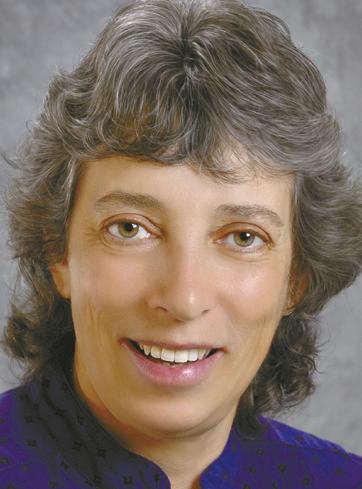
By Jim Miller
Dear Savvy Senior,
What all does Medicare cover when it comes to vision care? I currently have good vision insurance through my employer but will lose it when I retire.
Almost 65
Dear Almost,
Many soon-to-be retirees are a bit blurry with what Medicare does and doesn’t cover when it comes to vision care.
The good news is that Medicare covers most medical issues like cataract surgery, treatment of eye diseases and medical emergencies.
Unfortunately, routine care like eye exams and eyeglasses are usually the beneficiary’s responsibility.
Here’s a breakdown of what is and isn’t covered.
Eye exams and treatments: Medicare does not cover routine eye exams that test for eyeglasses or contact lenses, but they do cover yearly medical eye exams if you have diabetes or are at high risk for glaucoma. They will also pay for exams to test and treat medical eye diseases if you’re having vision problems that indicate a serious eye problem like macular degeneration, dry eye syndrome, glaucoma, eye infections or if you get something in your eye.
Eye surgeries: Medicare will cover most eye surgeries that help repair the eye function, including cataract surgery to remove cataracts and insert standard intraocular lenses to replace your own. Medicare will not, however, pick up the extra cost if you choose a premium multifocal lens that restores full range of vision, thereby reducing your need for glasses after cataract surgery. The extra cost for a premium lens can run $1,500 to $4,000 per eye.
Eye surgeries that are usually not covered by Medicare include refractive (LASIK) surgery and cosmetic eye surgery that are not considered medically necessary.
Eyeglasses and contact lenses: Medicare will not pay for eyeglasses or contact lenses, with one exception: If you have had a conventional intraocular lens inserted during cataract surgery, Medicare will pay for eyeglasses or contact lenses following the operation.
Although original Medicare’s vision coverage is limited to medical issues, there are ways you can save on routine care.
Here are several to check into.
Medicare Advantage plans: Many of
these plans, which are alternatives to original Medicare and sold through private insurance companies, cover routine eye exams and eyeglasses, but coverage is limited so be sure you understand the specifics.
While I don’t recommend enrolling in an Advantage plan just to get vision coverage, it is an option you should know about. To locate Advantage plans in your area that provide vision coverage, go to Medicare.gov/ plan-compare or call 800-633-4227.
Purchase vision insurance: If you get routine eye exams and purchase new eyeglasses annually, a vision insurance plan may be worth the costs. These policies typically range between $5 and $30 per month. Most plans will also have copays or deductibles you’ll be responsible for.
Check veterans’ benefits: If you’re a veteran and qualify for VA health care benefits, you may be able to get some or all of your routine vision care through VA. Go to VA.gov/ health-care/about-va-health-benefits/vision-care to learn more.
Find cheaper shopping options: Many retailers provide discounts –between 10 and 50 percent – on eye exams and eyeglasses if you belong to a membership group like AARP or AAA.
You can also save by shopping at discount retailers like Costco Optical, Sam’s Club Optical or Target Optical, which are all recommended by Consumer Reports. Or consider buying your glasses online at retailers like ZenniOptical.com, EyeBuyDirect. com or GlassesUSA.com which offer big savings.
To purchase glasses online, you’ll need a valid prescription from an eye doctor (no more than a year old), plus your pupillary distance number, which is the distance, measured in millimeters, between the centers of your pupils in each eye.
Look for assistance
There are also health centers and local clinics that provide free or discounted vision exams and eyeglasses to those in need. To find them put a call into your local Lions Club (see Directory.LionsClubs.org) for referrals.
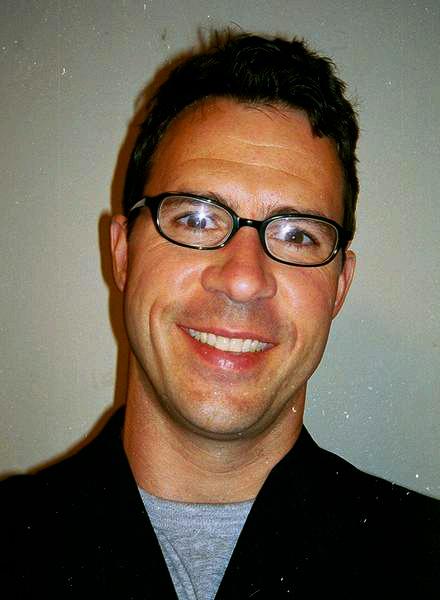
Send your senior questions to: Savvy Senior, P.O. Box 5443, Norman, OK 73070, or visit SavvySenior. org. Jim Miller is a contributor to the NBC Today show and author of “The Savvy Senior” book.

Rome Health has been awarded nearly $5 million over five years through the Mother Cabrini Health Foundation’s $51 million nursing initiative, a transformative investment in New York state’s nursing workforce.
The grant supports Rome Health’s pursuit of magnet recognition for nursing excellence and provides critical funding to bolster recruitment, retention and professional development.
Rome Health is one of only 13 hospitals statewide selected through a competitive application process to receive support from the new nursing initiative, which aims to address workforce shortages, reduce burnout, and enhance patient care at hospitals serving high-need populations.
“This investment in professional nursing practice will strengthen Rome Health’s role as a safety net hospital providing access to high-quality care for our most vulnerable residents,” said Rome Health President & CEO AnneMarie Czyz. “For financially challenged Upstate community hospitals like ours, this level of investment is transformative—supporting virtual nursing, continuing education, leadership development, and workforce well-being as we work toward magnet recognition.”
“Achieving magnet recognition goes beyond just a designation—it symbolizes our steadfast commitment to delivering the highest quality care to our patients and community. It also strengthens our ability to attract and retain top talent, fostering a culture of
professional growth, collaboration, and excellence for all staff members,” said Chief Nursing Officer/Vice President Clinical Services Ashley Edwards. “Together, we will achieve magnet status and further solidify Rome Health as a leader in community-based healthcare, providing exceptional care to our patients and creating a workplace where every staff member feels valued and empowered.”
The grant supports Rome Health in developing innovative models of care, including virtual nursing—a flexible and team-based approach to reduce bedside nurse workload and improve efficiency. Virtual nurses can assist with admissions, discharges, documentation, and patient education, allowing bedside nurses to focus on hands-on care.
Rome Health’s nurse residency program will also expand through the grant, offering structured education, mentorship, and clinical experience to help new graduates transition into professional roles with confidence and competence in ambulatory settings.
This five-year grant will fund key initiatives, including consulting services, nursing certifications, tuition reimbursement, technology upgrades and leadership development. Additionally, the grant will fund new positions including a virtual nurse coordinator, two virtual RNs, a nurse informatics specialist, and an educator to expand its transitions-to-practice program into the ambulatory setting.

By Barbara Pierce
Insomnia is a common sleep disorder that makes it hard to fall asleep or stay asleep. Cognitive behavioral therapy for insomnia, called CBT-I, can effectively treat long-term sleep problems.
Generally, it’s the first treatment recommended for chronic insomnia.
“I’m stunned with how well it works,” said Holly Vanderhoff, director of student counseling service at SUNY Upstate Medical University. She has been trained in CBT-I. “Research shows that it’s effective.”
CBT-I helps you find which thoughts and behaviors are causing your sleep problems and are making your sleep problems worse. Unlike sleeping pills, CBT-I helps you overcome the causes of your sleep problems.
CBT-I can benefit nearly anyone with sleep problems. It can help people who have insomnia due to lifestyle habits, medical issues, physical problems or mental health con-
ditions. The positive effects of CBT-I seem to last and there is no evidence that it has harmful side effects.
CBT requires steady practice and some approaches may cause you to lose sleep at first. But stay with it and you’ll likely see lasting results.
“It’s a short-term therapy, usually just eight to 10 sessions cures the insomnia,” said Vanderhoff. “We don’t get into other issues you may be having; we just focus on the insomnia.”
“Poor sleep habits contribute,” she explained. “That’s the B for behavior. C is for cognitions, the thoughts and beliefs that cause you to have difficulty sleeping.”
Regarding behaviors that promote good sleep, one is having a consistent sleep schedule, she said.
“Go to bed and get up at the same time every day,” she said. “Don’t sleep in on the weekends if you have to get up during the weekdays at 6 a.m.”

More young adults in the U.S. are being diagnosed with cancer, and researchers are trying to figure out why.
A new government report shows that rates of several types of cancer are going up in people under age 50, especially among women.
The study, led by scientists at the National Cancer Institute, looked at more than 2 million cancer cases in people ages 15 to 49 between 2010 and 2019.
Of the 33 types of cancer considered, 14 showed rising rates in at least one younger age group. About
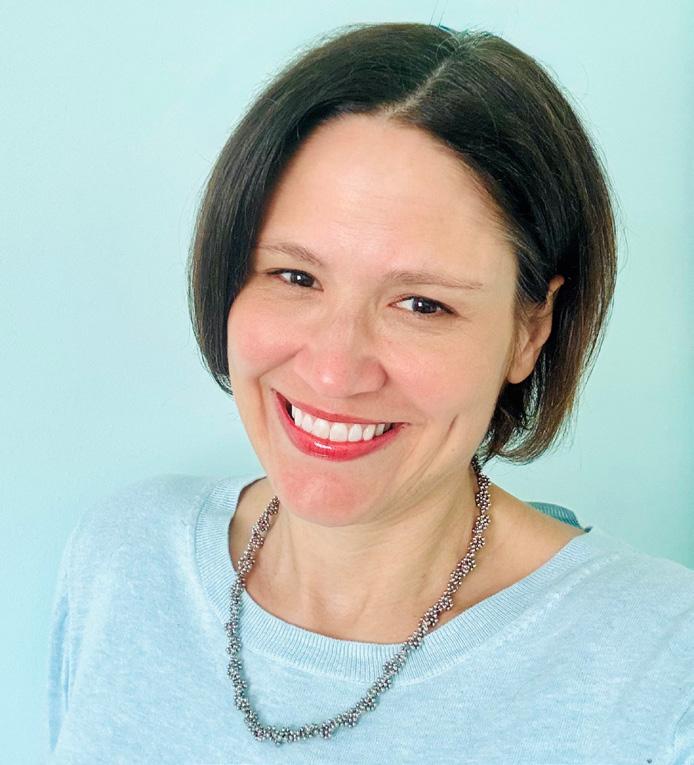
An environment conducive to sleep is important. This includes quiet, no TV, a cool temperature, (a cool temperature promotes good sleep) and dark. Even small sources of light like the glow from your alarm clock can interfere with your sleep; be alert to that, she added.
Have a night time routine, wind down before bed. Step away from your screen before bedtime, do calming activities, like reading, taking a warm bath or shower, listening to calming music. Avoid caffeine, alcohol, exercising, engaging in mentally taxing tasks.
Sleep restriction is another thing helpful for insomnia, but it can be brutal, she said. Limit the time you spend in bed without sleeping; this will help. When you can’t sleep, get up and do something relaxing then go back to bed when you feel more relaxed. People with insomnia often spend a lot of time lying in bed awake, which weakens the association between bed and sleep and makes it harder to fall asleep.
Associate your bedroom with good sleep. Many people use their bedroom for other things, like a place to work, to watch TV, to exercise. If
you have insomnia, get those things out of your bedroom, she recommended.
“The other component to CBT-I therapy is the ‘C’ — your thoughts or beliefs,” she said.
CBT-I helps you find out which thoughts about sleep could be causing your sleep problems and making them worse. You learn to replace these thoughts with thoughts that support sleep.
“Your thoughts can create anxiety about sleep, as most of these thoughts are catastrophizing,” said Vanderhoff. You may be thinking: “I’ll never fall asleep!” “I’ll feel awful tomorrow; this is terrible!” “Why can’t I fall asleep?”
The things you are telling yourself about your insomnia makes you more anxious and upset, said Vanderhoff.
“The key is to identity your thoughts or beliefs about sleep and modify them,” she suggested. “For example, replace a catastrophizing thought with a more balanced one. A more balanced thought would be something like: ‘I may or may not sleep well, but I will be able to function tomorrow; I’ll get through the day. Whatever happens, happens.’”
CBT-I may be a good treatment choice if you have long-term sleep problems or you’re worried about becoming dependent on sleep medicines. It can also be a good choice if medicines aren’t effective or cause bothersome side effects.
“You do need a specialist trained in cognitive behavioral therapy for insomnia,” she added. “They are few and far between. A general therapist won’t be helpful if you have chronic insomnia,” she said.
“There’s a program available through the VA (even if you aren’t a veteran) called ‘CBT-I Coach’ that is really good,” she added.
This is an app that can be found at https://mobile.va.gov.
“There are also links to some programs at sleepfoundation.org,” she suggested.”
63% of these early-onset cancers were found in women, The Associated Press reported.
“These kinds of patterns generally reflect something profound going on,” Tim Rebbeck of the Dana-Farber Cancer Institute, said. “We need to fund research that will help us understand.”
The results were published May 8 in the journal Cancer Discovery.
The biggest increase was in breast cancer, which had about 4,800 more cases in 2019 than expected based on 2010 rates. Colon cancer had about 2,000 more cases, kidney
cancer had 1,800 and uterine cancer had 1,200.
Most cancer death rates in the 15to 49-year-old age group did not rise. But researchers did see an increase in deaths from colon, uterine and testicular cancers, AP said.
Experts don’t yet know exactly what’s causing these trends. The databases studied didn’t include information on lifestyle risks or access to care.
“Several of these cancer types are known to be associated with excess body weight and so one of the leading hypotheses is increasing rates of
obesity,” said lead author Meredith Shiels of the National Cancer Institute.
Not all cancers are on the rise, however. Rates of more than a dozen cancer types actually dropped in people under 50. The biggest decreases were seen in lung and prostate cancer.
Experts say fewer people smoking likely helped lower lung cancer rates. And changes in testing guidelines may explain the drop in prostate cancer among younger men, AP reported.
buprofen — better known by one of its brand names, Advil — is one of the most popular medications on the market today for treating all different types of pain, headaches, fevers and cramps.
Given the drug’s broad pain-reducing effects, safety record and availability over the counter (OTC), it’s no surprise that some people pop the little brownish-red tablets whenever they feel the slightest twinge of discomfort.
But ibuprofen, which is also sold under brand names like Motrin and Nuprin, can pose certain health risks, especially for those with kidney or stomach issues.
Here’s what you should know.
For most adults and children ages 12 years and older, the recommended OTC dose of ibuprofen is one (or two, if needed) 200-milligram tablets, caplets or gel caplets every four to six hours while symptoms persist. You shouldn’t take more than 1,200 mg (or six pills) in a 24-hour period.
If you haven’t consulted a doctor about how much is safe, or if you aren’t certain about your risk factors, it’s best not to exceed the recommended limit of 1,200 milligrams a
recently injured or had surgery, your doctor may prescribe ibuprofen for you at a higher dose. Prescription tablets are usually stronger compared to the OTC dose, such as 600 mg and 800 mg. The maximum daily dose for prescription-strength ibuprofen is 3,200 mg in a 24-hour period. But it’s important only to take what your provider has prescribed for you.
Also be aware that ibuprofen is sometimes added to certain cold and flu medications, so always read the ingredient list on medications before using them.
Ibuprofen belongs to a class of drugs known as nonsteroidal anti-inflammatory drugs, or NSAIDs, which reduce pain and inflammation by blocking the activity of certain enzymes.
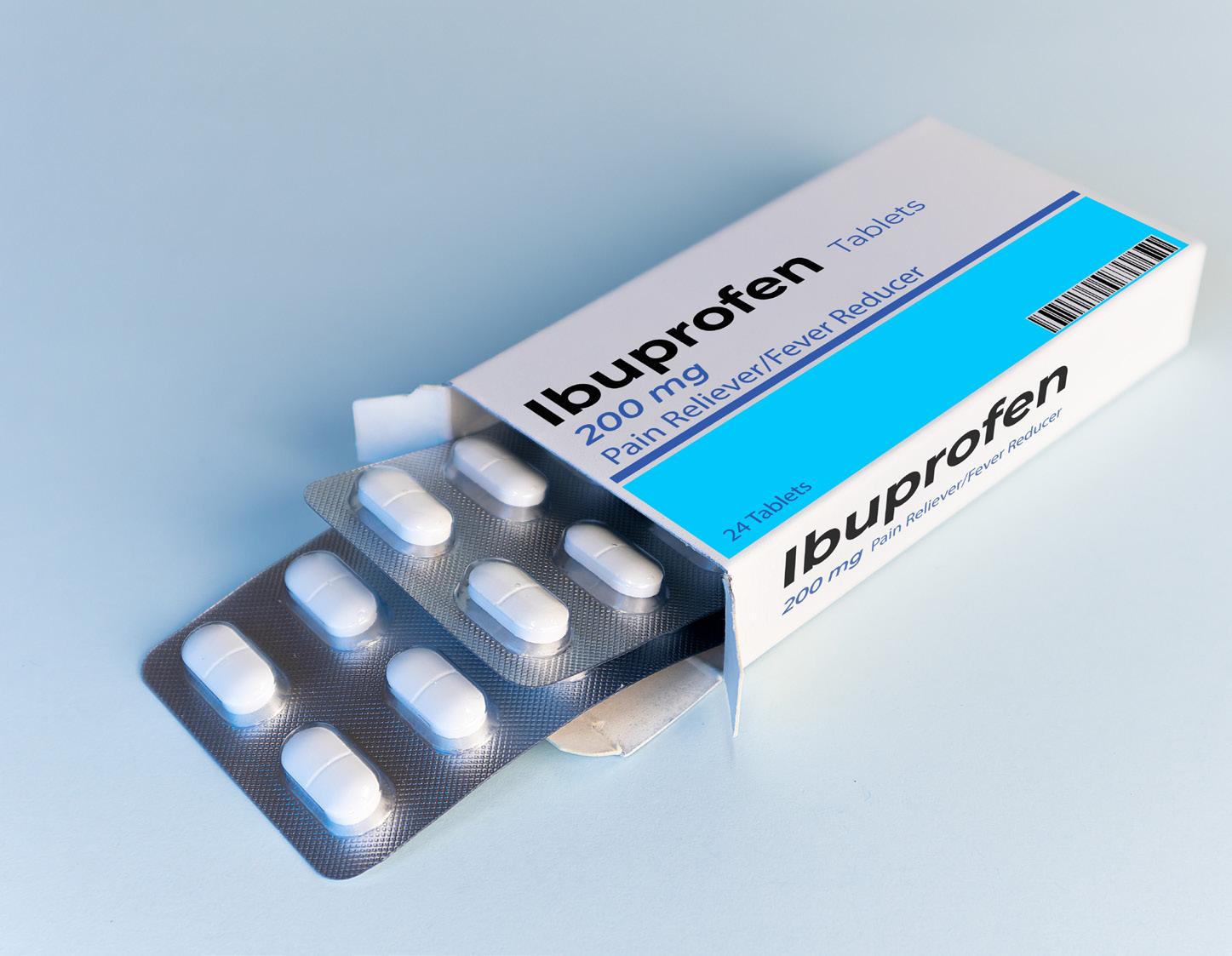
before taking ibuprofen.
But these enzymes also help maintain kidney and liver function and regulate the balance of fluids and electrolytes in your body. So, taking ibuprofen can be dangerous for patients with kidney disease or failure; those with liver damage or cirrhosis; and people with conditions that put strain on their kidneys, like high blood pressure or heart failure. Those at high risk for these conditions — as well as for stomach ulcers, heart
People who take medications such as diuretics, anticoagulants, ACE inhibitors or ARBs (angiotensin receptor blockers) to manage cardiovascular issues should also be careful, because ibuprofen stresses the kidneys and the heart.
To reduce these health risks, don’t take the maximum recommended dose for more than a week or two at a time. If you are needing it for more than two weeks or if you’re turning to ibuprofen every day to keep your aches and pains in check,
ibuprofen can also increase the risk of stomach ulcers. The drug inhibits enzymes that, among other things, aid in the production of mucus that lines and protects the stomach lining, so without these enzymes, the stomach becomes vulnerable to irritation and damage.
Some alternatives to ibuprofen you should talk to your doctor about include acetaminophen (Tylenol), topical NSAIDs (diclofenac gel) that is not absorbed into the blood to the same extent as oral NSAIDs, nonacetylated salicylates, curcumin (an
9.75” WIDE X 6.69” HIGH WE SEE YOU.
At Hematology-Oncology Associates of CNY, you are never just a diagnosis or a number. We see you...the whole person, with passions, hopes, dreams, histories, and loved ones who share in your journey. From diagnosis, to treatment, to survivorship – our personalized care focuses on truly understanding and planning for your unique needs. We provide genuinely compassionate support, collaborating with you, your family, and caregivers every step of the way.
Learn more about HOA today. We’ll see you and care for you – body, mind and spirit.



Fainting can be scary, but it’s often harmless.
Known medically as syncope, fainting happens when there’s not enough blood flow to the brain, causing a brief loss of consciousness.
But how do you know if it’s just a simple faint or something more serious?
Elijah Behr, a cardiologist at Mayo Clinic Healthcare in London, shares five key facts about fainting: what causes it, how to prevent it and when to see a doctor.
Most fainting is harmless, but not always
The most common type of fainting is vasovagal syncope, often triggered by emotional stress, pain, illness or dehydration.
“In some people, if they have a drop in blood pressure from emotional distress, pain, illness or dehydration, for example, or just generally have a low blood pressure, any provocation causes a reflex in the heart,” Behr explained in a news release.
“Rather than the heart speeding up and pumping more forcefully to maintain the blood pressure, it starts to slow down. The blood pressure drops, the heart rate slows further, and the heart can pause for many
seconds; sometimes close to a minute for some people who have more severe fainting episodes.”
While simple fainting usually resolves quickly, cardiac syncope — caused by an underlying heart problem — can be more serious.
“This is usually a more abrupt loss and return of consciousness than in simple fainting. If you’re older, you’re more likely to have underlying heart disease that you may or may not be aware of. That’s one of the reasons to be more concerned about loss of consciousness in older individuals,” Behr explained.
“Young people can also have heart diseases that can cause cardiac syncope that may be a warning sign of something more serious to come, so it is important to investigate it.”
Fainting often comes with early warning signs:
• Lightheadedness
• Nausea
• Buzzing in the ears
• Tunnel vision or temporary vision loss
• Sweating and clamminess
Some people get these warnings 30 minutes before fainting, while others have just 30 seconds to react, Behr added.
“If your blood pressure is getting low and you’re getting those symptoms, it means the blood doesn’t get into your brain, and if your heart is trying to push the blood to your brain against gravity, then it’s struggling. You really need to get your head level or below your heart so the blood pressure gets back to the brain, and that will avert all the symptoms and the vicious cycle that ensues,” Behr explained.
“Get your head between your knees or lie down and put your head down and your feet up in the air, depending on where you are and what is feasible to do.”
Key steps if you or someone else faints:
• Check for breathing and a pulse. If absent, start CPR and call for help
• Lay the person flat and open the airway
• Rest after fainting and drink water, preferably with electrolytes if dehydrated
Getting up and walking around straight away is probably the worst thing to do, Behr warned.
When to see a doc
Most simple fainting doesn’t
require emergency care.
“If somebody has had simple fainting with the clear precipitants that I described, it is best to have a chat with your PCP [primary care physician] to talk about it. Particularly if it’s a first onset of symptoms, it’s best not to ignore it,” Behr added.
“Often people go to the emergency department after a first faint, which I think is very fair to do and I would encourage.”
Seek medical help if:
• You faint while exercising
• You have heart palpitations
• There’s a family history of sudden death or heart problems
• You faint without warning or get injured during a fall
Can fainting be prevented?
“For general preventive measures, we advise most people who have fainted to drink more water and to sometimes add a bit of salt to their food, because generally they’re running a low blood pressure,” Behr said.
“For those who faint at the sight of blood, cognitive behavioral therapy (CBT) may help overcome the reaction,” Behr also added.